Marine Corps News

‘May the 4th be with you’: How World War II influenced ‘Star Wars’
One does not have to stray far to glean that the galaxy of “Star Wars” is rife with WWII-based allegories.
“By accident, a great deal [of J.R.R. Tolkien’s book series “The Lord of the Rings”] can be read topically,” Maj. Warren Lewis, brother to C.S. Lewis, wrote in possibly the first ever review of the novel in 1949. “The Shire standing for England, Rohan for France, Gondor the Germany of the future, Sauron for Stalin.”
And while Tolkien later explicitly rejected the idea that his “story was an allegory of any historical event, most of all the recent war against Nazism … for all such protestations, Lewis had clearly been on to something back in 1949,” historian Alan Allport wrote in his 2020 book about the social and military history of the U.K. during World War II, “Britain at Bay.”
Rather than singularly weaving a mythopoeic fantasy world, Allport contended, Tolkien’s future audience “was going to see associations between events in Middle Earth and those in their own world.”
Tolkien, however, was not the first nor the last to draw inspiration from the cataclysmic bloodletting that was the Second World War.
Today, as fans celebrate May the Fourth (be with you), one does not have to stray far to glean that the galaxy of “Star Wars” is rife with WWII-based allegories — and its fanbase might equal, if not surpass, Tolkien’s.
“Star Wars” creator George Lucas famously studied over 25 hours of footage from World War II dogfights and jittery newsreel imagery while researching for the films — even using the footage as placeholders in the film before special effects were added.
“So one second you’re with the Wookiee in the spaceship and the next you’re in ‘The Bridges at Toko-Ri.’ It was like, ‘George, what is going on?’” Willard Huyck, a screenwriter and personal friend of Lucas, stated in a 1997 interview.
Though the b-roll was eventually edited out, the aerial tactics established in World War II remain visible.
One such shot, according to National WWII Museum and Memorial curator Corey Graff, “showed aircraft peeling out of formation and dropping from sight. The clip was used as a model for the memorable shot of Rebel craft diving to attack the Death Star. One at a time, the fictional spaceships elegantly ‘aileron roll’ across the screen, mimicking the movements of the 1940s aircraft almost exactly.”
Entire books have been devoted to such analogies, but we’ve summed up a few of our favorites for some May the Fourth enjoyment.
The Millennium Falcon’s cockpit came from the Boeing B-29 Fortress
After studying hours of WWII footage, Lucas became particularly enamored with the cockpit of B-29s — the famous bomber known for dropping the atomic bombs on Hiroshima and Nagasaki in 1945.
The result? The cockpit of Han Solo’s beloved Millennium Falcon looks like it was lifted straight out of Boeing’s blueprints, replete with the B-29′s signature greenhouse-style cockpit. And, exactly like on the Superfortress, the Falcon sports defensive gun turrets — which come in handy when battling a Death Star.
The Empire’s similarities to Nazi Germany
From stormtroopers to Imperial officers’ uniforms and even Darth Vader’s helmet, which resembles those worn by the Wehrmacht during WWII, the analogies between Nazi Germany and the Galactic Empire are not exactly subtle.
The gradual rise of Hitler from German chancellor to Nazi dictator is further mirrored in the rise of Darth Sidious, or Sheev Palpatine, from chancellor to world’s most in-need-of-facial-moisturizer emperor.
Depictions of Star Wars spaceships were influenced by WWII fighters
Once again Lucas turned to World War II aviation for inspiration to give his spaceships unique sounds. According to Ian D’Costa for Tacairnet, sounds couldn’t easily be synthesized in the same way studios can create movie sound effects today. To get around that, Lucas sent out sound designer Ben Burtt to Reno Air Races in Nevada, where he was allowed to record the noise of P-51 Mustangs racing overhead.
Burtt later recalled, “I just said, ‘I want to record some planes,’ and they said ‘Yeah? Then go on out there.’ You could never do that nowadays. I was out at the pylons, and planes were passing 15 feet above my head. They were so fast that I could hardly see them go by; they were just a blur, though I could smell the oil and exhaust. ... Almost all of the spaceships came out of those Mojave recordings, including the Falcon.”
The Death Star trench run was inspired by the British Dambuster Raid
Lucas further drew inspiration from the 1955 film “The Dam Busters,” which chronicles the audacious British raid on Germany’s strategic river dams in 1943. The dams were heavily defended by anti-aircraft fire, a recurring theme in “Star Wars.”
“The Death Star attack is all about combat in the face of desperate odds,” Graff wrote in Smithsonian Magazine in 2020. “It’s a clear homage to the epic air battles seen in movies from the 1950s and 1960s.”
The Rebels suffer catastrophic losses, and the Death Star raid, just like in 1943, teeters on the brink of failure, “until a pivotal moment when [the] Millennium Falcon comes diving out of the ‘sun,’ a trick as old as military aviation itself,” Graff concluded.
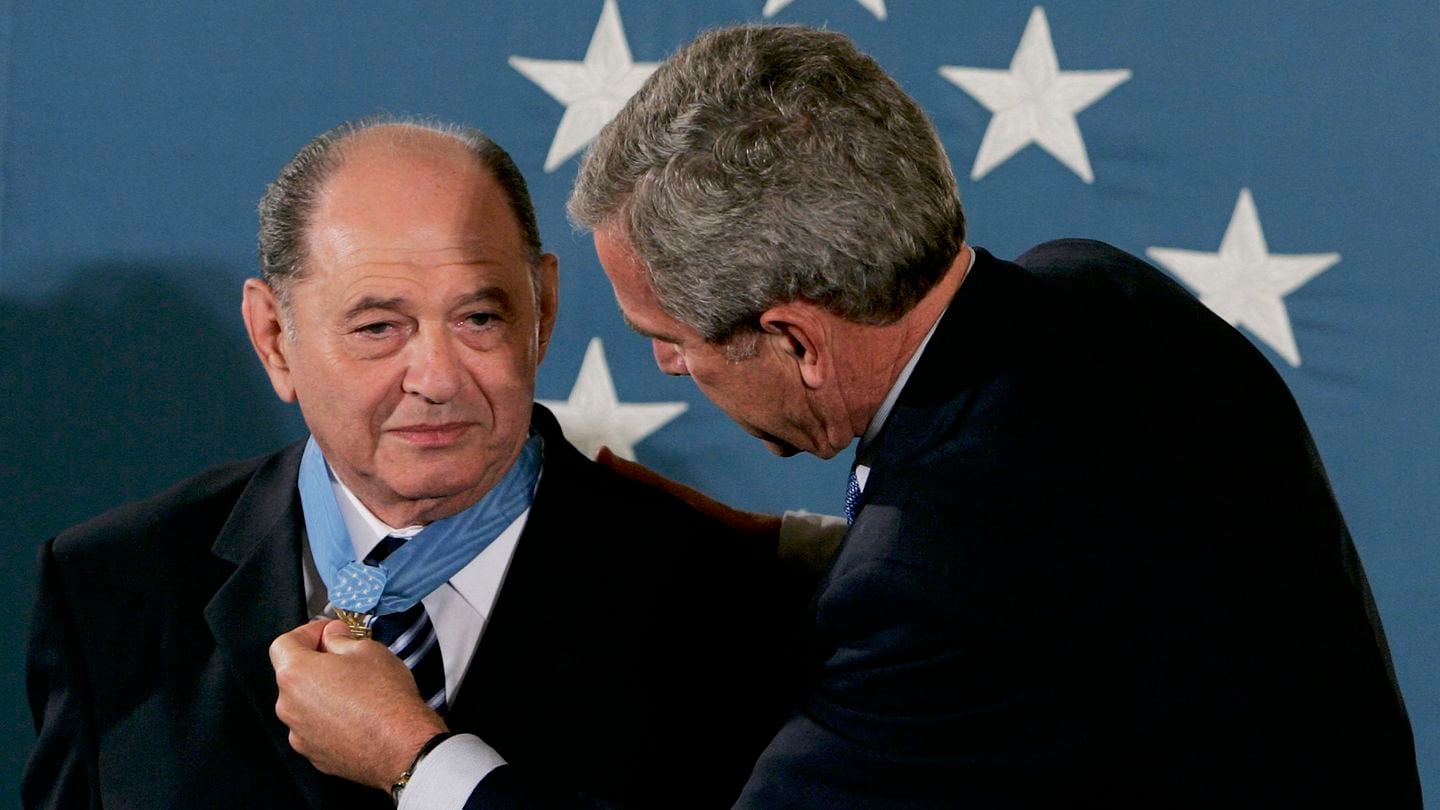
The Holocaust survivor who became a Medal of Honor recipient
Tibor Rubin had a history of defying the Reaper.
When Tibor Rubin received the Medal of Honor in 2005, he largely had his sergeant to thank. Said sergeant constantly sent him on missions intended to get him killed. By then, however, Rubin had a history of defying the Reaper.
Born in Pásztó, Hungary, on June 18, 1929, Tibor Rubin was 13 when the Nazis sent him to Mauthausen concentration camp in Austria. He survived 14 months before the U.S. Third Army liberated the camp. His family was less fortunate — his stepmother and sister died in Auschwitz and his father perished in Buchenwald.
In 1948 Rubin emigrated to the United States, working first as a shoemaker and then a butcher in New York City. He also strove to fulfill a promise that “if the Lord helped me go to America, I’d join the Army.”
He failed the language test in 1949 but enlisted after a second try. In July 1950 Private First Class “Ted” Rubin was shipped to Korea as a member of Company I, 8th Regiment, 1st Cavalry Division.
Holocaust survivor, Medal of Honor recipient’s story comes to life in graphic novel
There he discovered the persistence of American anti-Semitism, particularly from his sergeant, Arthur Peyton, who made a policy of “volunteering” him for the most hazardous missions. During one, Rubin defended a hill against waves of attacking North Koreans for 24 hours.
“I didn’t have too much time to get scared,” he explained afterward, “so I went crazy.” For that and other outstanding actions two of Rubin’s commanders recommended him for the Medal of Honor, but both officers were subsequently killed and Peyton “lost” the paperwork.
That October the United Nations forces were advancing into North Korea when the Chinese intervened, reversing fortunes in Korea for the second time since the war began. Manning a lone machine gun, Rubin covered his regiment’s retreat until the ammunition ran out. He was shot in the chest, arm and leg, and was captured.
It wasn’t until April 20, 1953, that Rubin was released in a prisoner of war exchange. Although sick and weak, he claimed that Chinese treatment, harsh though it was, was a cakewalk compared to Mauthausen, from which he’d developed survival techniques that came into play again, such as stealing food and medicine from his captors or using maggots to treat gangrenous wounds, all of which he did for fellow POWs as “mitzvahs” (good deeds).
Learning that he was not yet an American citizen, the Chinese repeatedly offered to repatriate him to Hungary if he wished. Given the oppressive Communist regime there, Rubin declined.
After his honorable discharge with two Purple Hearts, Rubin attained citizenship and settled in Long Beach, California, mainly working at a liquor store with his brother Emery. After meeting him at later reunions, however, veterans of I Company and men who knew him in captivity began a campaign to get Rubin the recognition they thought he’d long deserved.
Finally, in 2005, President George W. Bush presented him with the Medal of Honor, with a citation that described all he’d been witnessed to have done:
“Corporal Tibor Rubin distinguished himself by extraordinary heroism during the period from July 23, 1950, to April 20, 1953, while serving as a rifleman with I Company, 8th Cavalry Regiment, 1st Cavalry Division in the Republic of Korea. While his unit was retreating to the Pusan Perimeter, Corporal Rubin was assigned to stay behind to keep open the Taegu-Pusan Road link used by his withdrawing unit.
During the ensuing battle, overwhelming numbers of North Korean troops assaulted a hill defended solely by Corporal Rubin. He inflicted a staggering number of casualties on the attacking force during this 24-hour personal battle, single-handedly slowing the enemy advance and allowing the 8th Cavalry Regiment to complete its withdrawal successfully.
Following the breakout from the Pusan Perimeter, the 8th Cavalry Regiment proceeded northward and advanced into North Korea. During the advance he helped capture several hundred North Korean soldiers. On October 30, 1950, Chinese forces attacked his unit at Unsan, North Korea, during a massive nighttime assault. That night and throughout the next day, he manned a .30 caliber machine gun at the south end of the unit’s line after three gunners became casualties. He continued to man his machine gun until his ammunition was exhausted. His determined stand slowed the pace of the enemy advance in his sector, permitting the remnants of his unit to retreat southward.
As the battle raged, Corporal Rubin was severely wounded and captured by the Chinese. Choosing to remain in the prison camp despite offers from the Chinese to return him to his native Hungary, Corporal Rubin disregarded his own personal safety and immediately began sneaking out of the camp at night in search of food for his comrades. Breaking into enemy storehouses and gardens, he risked certain torture or death if caught. Corporal Rubin provided not only food to the starving soldiers, but also desperately needed medical care and moral support for the sick and wounded of the POW camp. His brave, selfless efforts were directly attributed to saving the lives of as many as forty of his fellow prisoners.”
Rubin’s nephew, Robert Huntly, who was inspired by him to join the Army, described him as having a Hungarian accent and a Jackie Mason sense of humor.
Tibor “Ted” Rubin, the only survivor of the Nazi genocide to earn the Medal of Honor, died in Garden Grove, California, on December 5, 2015.
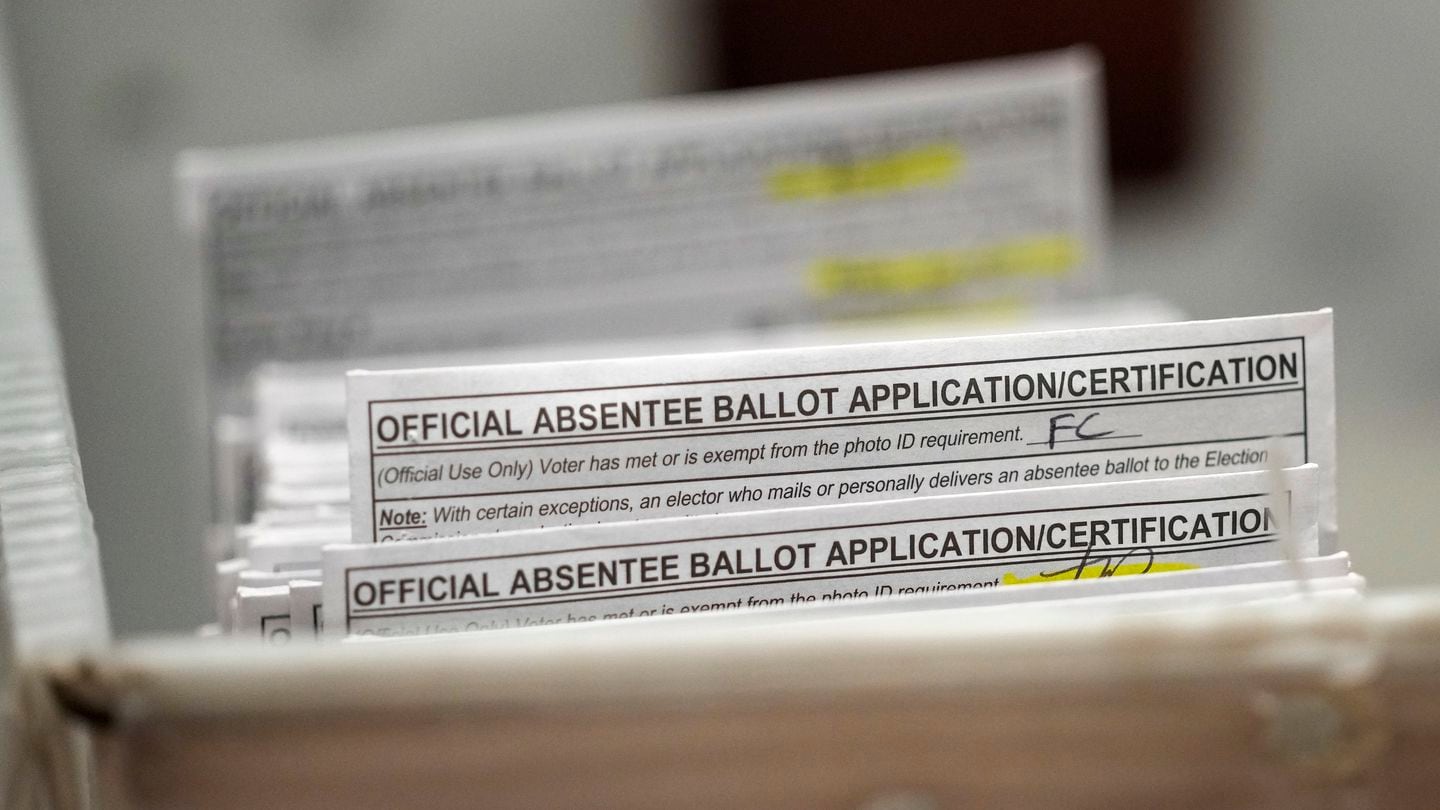
Former election official fined for obtaining fake military ballots
A former Milwaukee election official convicted of misconduct in office and fraud for obtaining fake absentee ballots was sentenced this week.
MADISON, Wis. — A former Milwaukee election official convicted of misconduct in office and fraud for obtaining fake military absentee ballots was sentenced Thursday to one year of probation and fined $3,000.
Kimberly Zapata, 47, also was ordered to complete 120 hours of community service.
Prosecutors charged Zapata in November 2022 with one felony count of misconduct in public office and three misdemeanor counts of election fraud. A jury in March found her guilty on all four counts.
Milwaukee County Circuit Court Judge Kori Ashley rejected an argument by Zapata’s attorneys that she was acting as a whistleblower, telling her before handing down the sentence that she had ways to make her point other than breaking the law.
Speaking just before the sentence was handed down, Zapata said she regretted her actions that she said “stemmed from a complete emotional breakdown,” Wisconsin Public Radio reported. She said she has autism spectrum disorder, which makes it difficult for her to regulate emotions, sensory input and thought processes.
“When someone uses my name, I want them to think of good qualities and the good things I have done,” Zapata said. “I don’t wish to be forever attached to what I did in that 8-minute window of my life.”
The felony charge carried a maximum sentence of 3 1/2 years in prison. Each misdemeanor count carried a maximum six-month sentence.
Milwaukee Assistant District Attorney Matthew Westphal said Zapata’s actions were “an attack on our electoral system,” which only works if the public can trust those administering it.
“Accusations of election fraud have literally led to violence and a violent insurrection in Washington, D.C.,” Westphal said. “That’s kind of the behavior we’re looking at here on the spectrum. That’s where we end up when we have people that are violating their duties, and that are putting forth this false information.”
In a sentencing memorandum, Zapata’s defense attorney Daniel Adams recommended a $500 fine and said any time behind bars would be “a gross injustice and completely unnecessary.”
“She has zero prior criminal record and has been convicted of non-violent offenses,” he wrote to Ashley. “Her intention was not to steal votes but to expose a legitimate flaw in the elections system.”
Zapata served as deputy director at the Milwaukee Election Commission in October 2022 when she used her work-issued laptop to obtain three military absentee ballots using fake names and Social Security numbers, according to a criminal complaint. She sent the ballots to Republican state Rep. Janel Brandtjen, an election conspiracy theorist, two weeks before the state’s gubernatorial and legislative elections.
After officials learned of her actions, she was fired from her job with the city.
Active military personnel do not have to register to vote or provide photo identification to obtain absentee ballots in Wisconsin. Zapata told investigators that she was stressed over death threats commission staff had been receiving from election conspiracy theorists and she wanted to shift their attention to real flaws in the system.
Milwaukee, home to the largest number of Democrats in Wisconsin, has been a target for complaints from former President Donald Trump and his supporters, who made unsubstantiated claims of widespread voter fraud to attack Biden’s 2020 victory.

US airstrike targeting al-Qaida leader in Syria killed a farmer
A U.S. airstrike in Syria in May 2023 that was targeting an al-Qaida leader killed an innocent civilian instead, U.S. Central Command said Thursday.
A U.S. airstrike in Syria in May 2023 that was targeting an al-Qaida leader killed an innocent civilian instead, U.S. Central Command said Thursday, confirming early reports from residents and family members shortly after the attack.
U.S. Central Command said an investigation into the May 3 strike concluded that U.S. forces misidentified the intended al-Qaida target “and that a civilian, Mr. Lufti Hasan Masto, was struck and killed.”
Shortly after the drone strike, the Syrian Observatory for Human Rights, an opposition war monitor, said it had hit a chicken farm near the town of Harem, killing one person. And just days later, relatives and neighbors told The Associated Press that the person killed was a farmer who raised sheep, chickens and cattle and had no involvement with armed groups.
Masto’s brother, Mohamed Masto, said reports that his brother, 60, was involved with al-Qaida were “absolute lies” and his killing was “an injustice and an aggression.” Instead, Masto was simply tending his sheep when the strike hit.
Central Command said the investigation into the strike was completed last November — but it wasn’t released publicly until Thursday.
In a statement, Central Command said much of the investigation and findings are classified but acknowledged it revealed “several issues that could be improved.”
“What we can share is the investigation concluded the strike was conducted in compliance with the law of armed conflict as well as Department of Defense and CENTCOM policies,” the statement said. “We are committed to learning from this incident and improving our targeting processes to mitigate potential civilian harm.”
The Defense Department has come under fire over the course of the wars in Iraq, Afghanistan and Syria for killing civilians in airstrikes. It set up a detailed investigation and review process for strikes when there are allegations of innocent people being killed.
The U.S. also continues to target al-Qaida and Islamic State leaders in Syria, including the 2017 airstrike that killed Abu al-Kheir al-Masri, a former aide to Osama bin Laden and al-Qaida’s second in command in Syria.
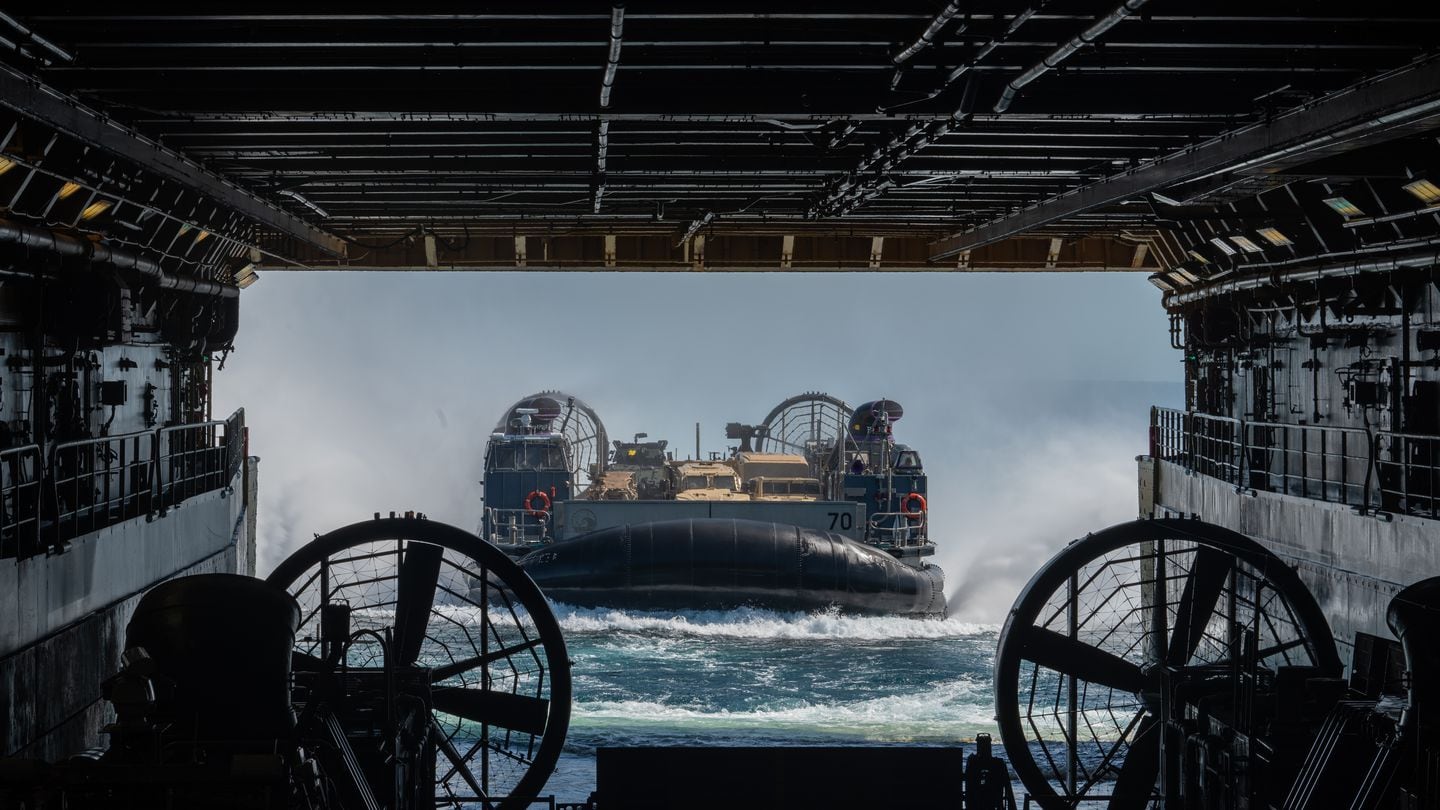
30 sailors and Marines injured in at-sea training mishap off Florida
Five of the injured troops were transported to a civilian hospital, with four released the next day, the Navy said.
Editor’s note: This story has been updated to note a comment by U.S. 2nd Fleet.
Dozens of sailors and Marines were injured Wednesday evening after an at-sea mishap during a training event off the coast of Florida, the Navy said Thursday.
Thirty Marines and sailors suffered injuries, with five sailors medically evacuated to Savannah Memorial University Medical Center for further care, according to the Navy.
“Four of the five Sailors have been released from the hospital after treatment,” the Navy said Thursday afternoon. “One Sailor remains under medical care and is being assessed for further treatment.”
The incident involved two of the Navy’s so-called “landing craft, air cushions,” or LCACs, 91-foot-long, air-cushioned vessels used to move troops and materiel from ship to shore.
The Navy’s statement did not say what specific training the LCACs were undertaking before the mishap, nor did it address the nature of the injuries.
Asked by Navy Times about the nature of the injuries and what the LCACs were doing before the mishap, U.S. 2nd Fleet officials emailed a statement that repeated the original statement the Navy released earlier on Thursday.
Troops that sustained minor injuries were treated aboard the amphibious assault ship Wasp and the amphibious transport dock New York, two of the three ships that comprise the Wasp Amphibious Ready Group.
The unit spent much of April in pre-deployment training, according to the Navy.
Marines with the 24th Marine Expeditionary Unit and sailors assigned to the Wasp Amphibious Ready Group were involved.
One of the LCACs was with the amphibious assault ship Wasp, while the other belonged to the amphibious transport dock New York.
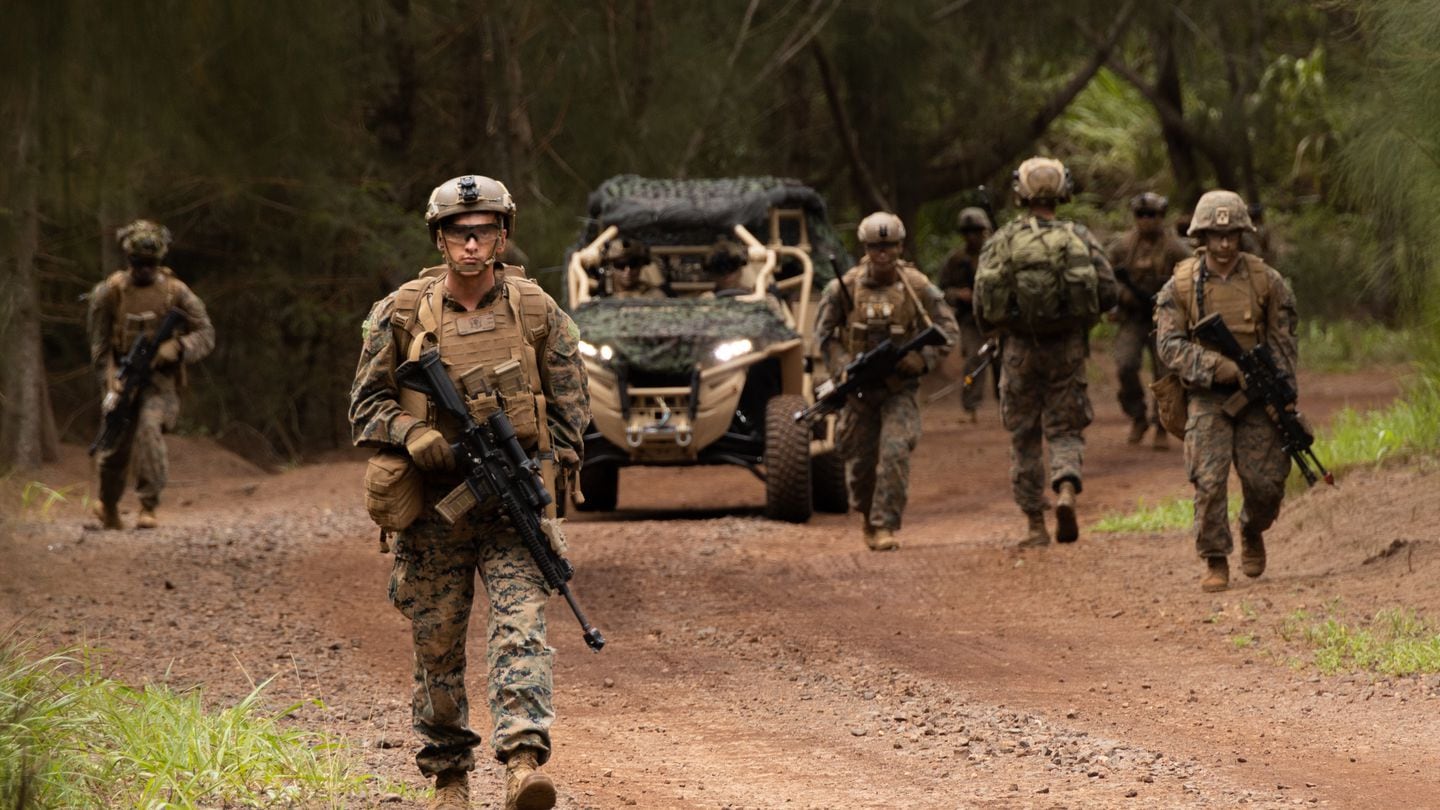
Marine Corps’ new Force Design approaches are paying off in operations
Pieces of the changes already in the operating force are proving their combat-worthiness, two senior generals said.
WASHINGTON ― Changes made to the Marine Corps structure, equipment and approach to deployments are giving the service new ways to react to crises across the globe.
As the Marines continue Force Design ― their manpower, equipment and operational shift to fight peer competitors such as China ― pieces of those changes already in the operating force are proving their combat-worthiness, two senior generals said Thursday at the Modern Day Marine Expo.
Lt. Gen. Karsten Heckl, deputy commandant of combat development and integration, pointed to a recent exercise and the ongoing war between Russia and Ukraine as examples.
During exercise Nordic Response in February, Marines teamed with NATO allies, serving as the stand-in force in Norway, operating a ground/air task–oriented radar, tracking airborne threats near the Russian border, Heckl said.
The G/ATOR is a key piece of equipment added to the Marine inventory as it shifts part of its focus to how it can provide unique capabilities to the other military services in joint operations.
What Marines may be learning from Houthi tactics in the Red Sea
But moves such as were happening back in 2022 when Russia launched its full-scale invasion of Ukraine.
Speaking with reporters following his panel appearance Thursday, Heckl stopped short of providing operational details, but said that Marines at the time with Task Force 61/2, part of end Marine expeditionary brigade, responded almost immediately, “with equipment we fielded directly because of force design that would not have otherwise been there and we did quite a bit of stuff with that, G/ATOR’s one of them but I’ll leave it at that.”
That new Marine focus, sensing threats and passing data, has been part of how force design has evolved, Heckl said.
“As we went on this force design journey, we started out we initially thought of blowing stuff up, very kinetically oriented, now we realize through the stand in force it’s really the capability of sensing and making sense,” Heckl said.
Lt. Gen. James Bierman, deputy commandant of plans, policies and operations, widened the scope of what the service has seen as it implements force design changes within units.
Bierman pointed to Houthi rebel strikes on maritime vessels in the Red Sea as evidence of how adversaries can create choke points and countering such attacks, “is going to be the business of the Marine Corps.”
In 2023, when Bierman commanded III Marine Expeditionary Force, the unit conducted exercise Azure Dragon. The focus was on the force’s ability to operate as a stand-in force in the first and second island chains.
The force is headquartered in Okinawa, Japan, within the first island chain that rings China. At the same time, the Marines have purpose built the 3rd Marine Littoral Regiment in Hawaii and recently stood up the 12th Marine Littoral Regiment, also in Okinawa, centered around force design concepts of sensing and striking within range of enemy forces.
“There’s been a lot of focus on the MLR, very appropriately so, what we were trying to do in Azure Dragon is validate our ability to stand in as a MEF, as a (Marine Air Ground Task Force),” Bierman said.
But having the force, a unit with 25,000 Marines, running as the stand in force sets up units such as the regiments to better exploit enemy weaknesses, Bierman said.
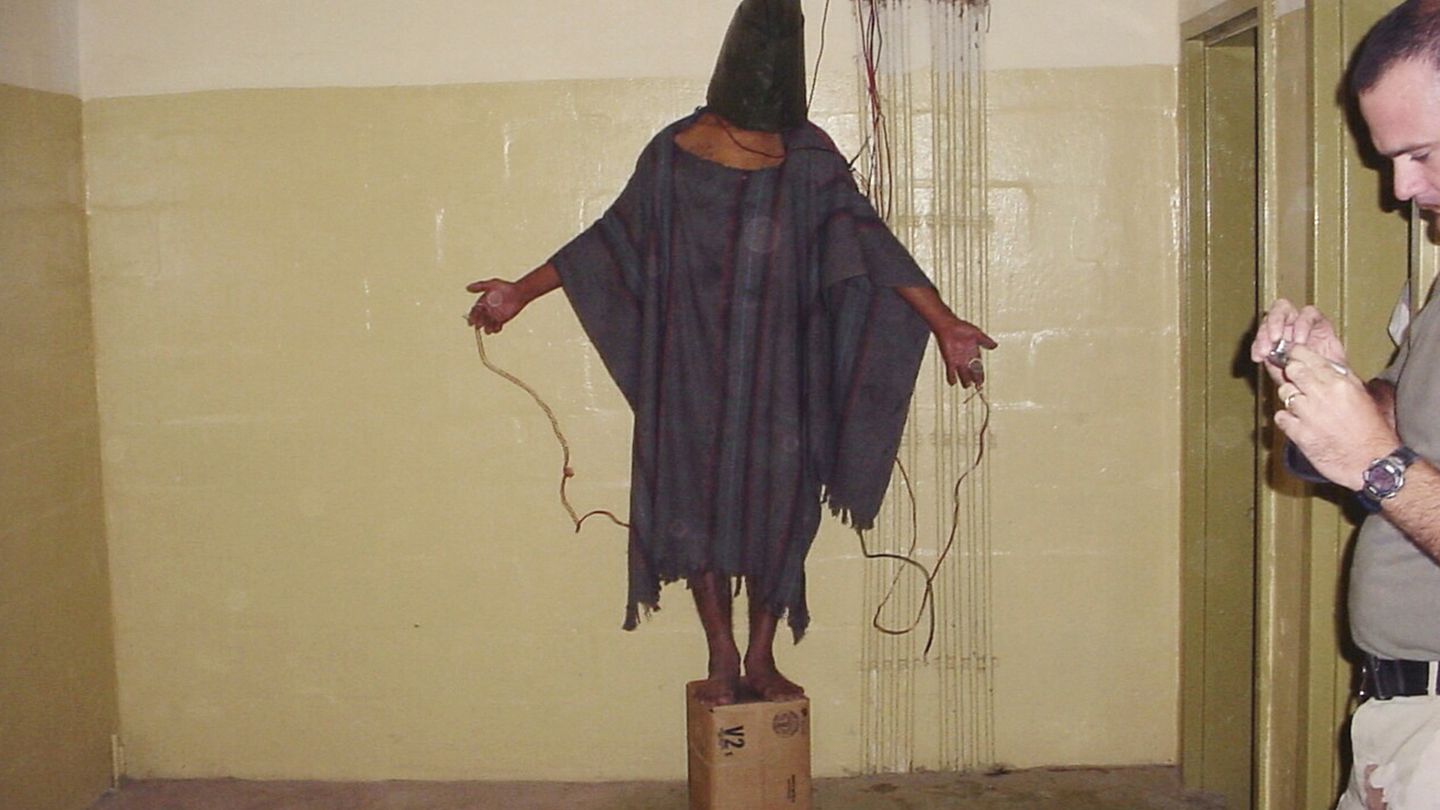
Judge declares mistrial after jury deadlocks in Abu Ghraib trial
The jury deadlocked on accusations that civilian interrogators at Abu Ghraib conspired with U.S. soldiers to abuse detainees.
A judge declared a mistrial Thursday after a jury said it was deadlocked and could not reach a verdict in the trial of a military contractor accused of contributing to the abuse of detainees at the Abu Ghraib Prison in Iraq two decades ago.
The mistrial came in the jury’s eighth day of deliberations.
The eight-member civil jury in Alexandria deadlocked on accusations the civilian interrogators who were supplied to the U.S. Army at Abu Ghraib in 2003 and 2004 had conspired with soldiers there to abuse detainees as a means of “softening them up” for questioning.
The trial was the first time a U.S. jury heard claims brought by Abu Ghraib survivors in the 20 years since photos of detainee mistreatment — accompanied by smiling U.S. soldiers inflicting the abuse — shocked the world during the U.S. occupation of Iraq.
Reston, Virginia-based CACI had argued that it wasn’t complicit in the detainees’ abuse. It said that its employees had little to any interaction with the three plaintiffs in the case and that any liability for their mistreatment belonged to the government, not CACI.
They jury sent out a note Wednesday afternoon saying it was deadlocked, and indicating in particular that it was hung up on a legal principle known as the “borrowed Servants” doctrine.
The plaintiffs can seek a retrial.
Asked if they would do so, Baher Azmy with the Center for Constitutional Rights, one of their lawyers, said, “The work we put in to this case is a fraction of what they endured as survivors of the horrors of Abu Ghraib, and we want to honor their courage.”
During the trial that began April 15, lawyers for the three plaintiffs argued that CACI was liable for their mistreatment even if they couldn’t prove that CACI’s interrogators were the ones who directly inflicted the abuse.
They argued that the interrogators had entered into a conspiracy with the military police who inflicted the abuse by instructing soldiers to “soften up” detainees for questioning.
The evidence included reports from two retired Army generals, who documented the abuse and concluded that multiple CACI interrogators were complicit in the abuse.
Those reports concluded that one of the interrogators, Steven Stefanowicz, lied to investigators about his conduct, and that he likely instructed soldiers to mistreat detainees and used dogs to intimidate detainees during interrogations.
Stefanowicz testified for CACI at trial through a recorded video deposition and denied mistreating detainees.
CACI officials initially had serious doubts about his ability to work as an interrogator, according to evidence introduced at trial. An email sent by CACI official Tom Howard before the company sent interrogators to Iraq described Stefanowicz as a “NO-GO for filling an interrogator position.”
CACI initially sent Stefanowicz over to Iraq not as an interrogator but as a screener, but he testified that the Army — desperately short of interrogators at a prison with a rapidly expanding population — promoted him to interrogator within a day of his arrival.
Trial evidence showed that CACI defended the work of another of its interrogators, Dan Johnson, even after the Army sought his dismissal when photos of the Abu Ghraib abuse became public, and one of the photos showed Johnson questioning a detainee in a crouched position that Army investigators determined to be an unauthorized stress position.
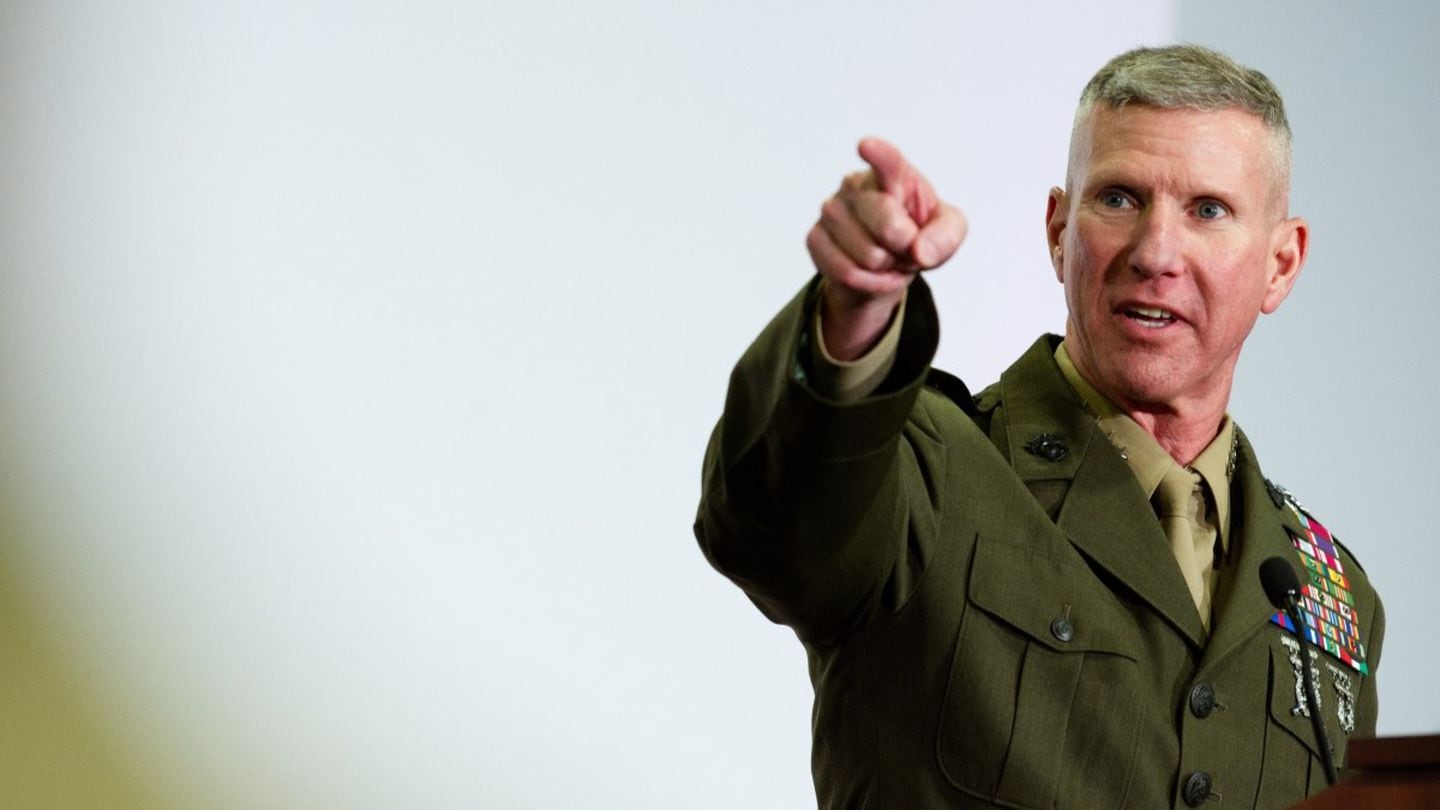
Top Marine ‘won’t apologize’ for Corps’ past neglect of barracks
"But now the tide has to turn, and we have to get back to quality of life," Gen. Eric Smith said.
WASHINGTON — The top Marine leader “won’t apologize” for the years of underinvestment in the Marine Corps’ barracks even though he has made improving those living facilities a top priority now that he is in charge.
“When we geared up for the wars in Iraq and Afghanistan, we focused on weapons systems, training and technology,” Commandant Gen. Eric Smith said Thursday at the Modern Day Marine conference in Washington. “And that focus kept a lot of Marines alive in Helmand province, kept a lot of Marines alive in Iraq, in the Sunni Triangle.”
“So, again, I can’t apologize for previous generations of Marines to prioritize training and equipping over quality of life,” he continued. “But now the tide has to turn, and we have to get back to quality of life.”
Smith’s comments came the day after the Corps’ budget chief also attributed barracks issues to investments in weapons systems over quality of life.
How the Marine Corps’ barracks got to be so bad, according to 2 generals
“We didn’t have the data to say, ‘How are we tracking the facilities’ condition in detail to defend more than $200 million a year for that?’” Lt. Gen. James Adams, the deputy Marine commandant for programs and resources, said Wednesday at the conference. “But we did have the data to say, ‘We need this Force Design weapons system or this modernized vehicle or this modernized weapon platform.’”
Adams said in response to a Marine Corps Times question about who was at fault for the previous underinvestment in the barracks that he didn’t see it as a fault.
A Government Accountability Office report published in September 2023 found widespread problems — including mold, dysfunctional plumbing, and poor heating and cooling — in barracks across the military services, including the Marine Corps.
Photos reveal vermin, filth and disarray at one Marine Corps barracks
A recent Corps-wide inspection found approximately half of barracks rooms were only “partially mission-capable,” meaning they were deficient in at least one aspect of living standards, Maj. Gen. David Maxwell, commander of Marine Corps Installations Command, said Wednesday at the Modern Day Marine conference.
Smith has served as the commandant since September 2023, although he became the acting commandant in July 2023 following the retirement of Commandant Gen. David Berger. For the two years before that, he was the assistant commandant, serving as the Corps’ No. 2 leader.
Quality of life, especially barracks improvements, has been central to Smith’s stated agenda during his time as commandant. Under the leadership of Smith and Assistant Commandant Gen. Christopher Mahoney, who served as acting commandant during Smith’s monthslong recovery from a cardiac arrest, the Corps has rolled out a barracks overhaul initiative.
That Barracks 2030 initiative entails consolidating Marines in the best barracks, professionalizing barracks management and speeding up maintenance. It also means making barracks restoration a priority in the service’s budget.
The Marine Corps has asked in its official fiscal year 2025 budget request for $274 million for barracks restoration, a $65 million increase from previous year. It signaled in its unfunded priorities list it would like an additional $230 million for that purpose if there were room in the budget.
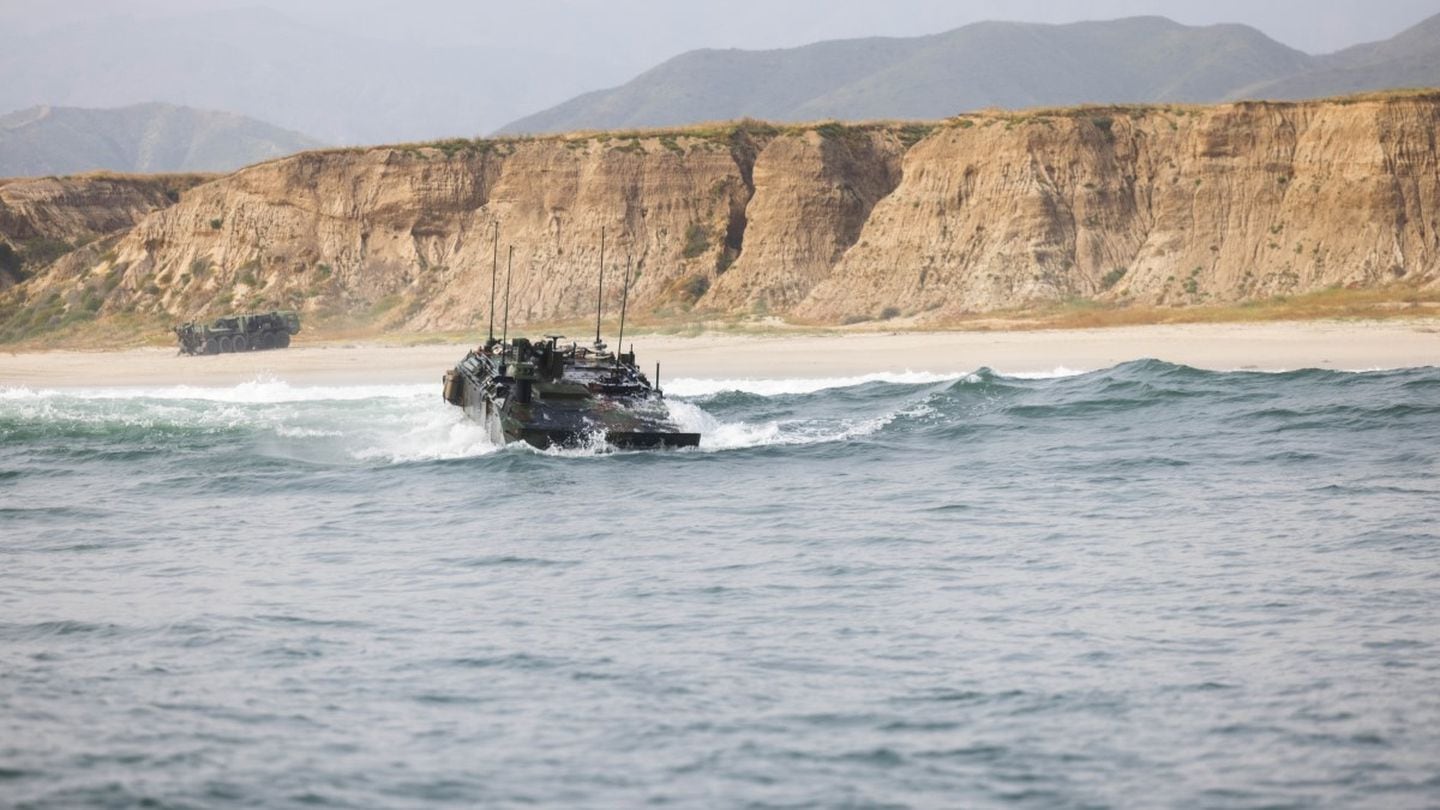
Marines sending new amphibious vehicles to Japan in the summer
184 amphibious combat vehicles have already been fielded by BAE Systems to the Marine Corps.
WASHINGTON — Marines in Japan will receive the Corps’ new amphibious vehicles for the first time in the summer.
Twelve amphibious combat vehicles will arrive at the Okinawa, Japan-based 4th Marine Regiment in July, Col. Tim Hough, the Corps’ program manager for advanced amphibious assault, said on Wednesday at the Modern Day Marine conference in Washington.
“That’s important because now we’ll be in distinct geographical locations,” Hough said, adding that the Corps was ready to handle the challenges that would arise from having the amphibious combat vehicles spread out for the first time.
The update about the movement of vehicles to Japan was one of several the Corps and manufacturer BAE Systems unveiled at the Modern Day Marine conference.
New variants of Marine amphibious combat vehicles coming soon
BAE Systems already has fielded 184 amphibious combat vehicles to the Marine Corps, but only to the 3rd Assault Amphibian Battalion and the Assault Amphibian School, both located at Camp Pendleton, California, according to Hough.
The amphibious combat vehicle allows Marines to travel from the Navy’s amphibious ships to shore and then roll onto land. It is replacing the amphibious assault vehicle, which had been in service since the 1970s.
After the amphibious combat vehicles were involved in multiple rollovers in 2022, in which no injuries were reported, the Marine Corps temporarily pulled them from operations in the surf zone. The service determined the mishaps happened because Marines hadn’t gotten sufficient training on how the amphibious combat vehicle differed from its predecessor vehicle, which has tracks rather than wheels, a flatter hull and a smaller size, among other design differences.
In 2023, the Marine Corps started recertifying vehicle operators and maintainers based on a new training curriculum.
The amphibious combat vehicle program is set to hit a few other milestones in the coming years.
The command-and-control-focused variant is scheduled to reach initial operating capability in fiscal year 2024′s third quarter, which ends July 1, according to Hough. The Corps expects the variant with a 30-mm cannon will reach initial operational capability in 2026, Hough said.
The assistant Marine commandant, Gen. Christopher Mahoney, said in January that amphibious combat vehicles would deploy with the 15th Marine Expeditionary Unit from California in the spring.
Outfitting vehicles with new tech
At the same Modern Day Marine trade show where Hough delivered his update, the company showed off the amphibious combat vehicle variant with the 30-mm cannon — this time equipped with an integrated combat system, which takes in information from sensors linked to other platforms and gathers it all on one interface.
The idea is to assemble information instantaneously through a network rather than relying on radio communication, said Garrett Lacaillade, vice president of amphibious vehicles at BAE Systems.
When BAE Systems demonstrated the system from within the vehicle on Monday, the sensors were filming from drones and other platforms at locations around the trade show. The sensor arrayed the live feeds of exhibitors’ booths and unsuspecting attendees on one screen, as in a Zoom call.
After BAE Systems’ Jesse Swangnete selected a target on the screen, the cannon moved to the appropriate angle.
Lacaillade said the Marine Corps seems “interested” in the system but has not yet issued any contract.
Junior Marines have tested out the system, though, and they have been able to figure out how to operate it with a few hours of training, according to Swangnete.
“They’ve grown up with the Xbox mentality,” he said.

Barracks problems take center stage at military readiness hearing
'I want Marines focused on bullets on bad guys, not managing HVAC systems.'
The chairman of the House Armed Services Committee readiness panel called for increased privatization of military barracks during a hearing Tuesday on fiscal year 2025 budget requests from the military services.
Rep. Mike Waltz, R-Fla., also asked the vice chiefs of staff whether the services’ budget requests would be enough to address a backlog of issues in barracks — and how the barracks figured into their unfunded priority list for the next fiscal year.
“My understanding is you have not submitted anything in your unfunded priority list for barracks,” Waltz said. “So, that leads me and the committee to assume — correct me if I’m wrong, please, on the record — that you have all the funding you need to fix this problem. Is that correct?”
Waltz’s questioning comes as military branches face decades-long scrutiny over the state of military housing — and its impact on recruitment and retention. A Government Accountability Office report in September 2023 found that all 10 installations visited had widespread issues with mold, in addition to heating and air condition systems.
On Feb. 7, the Marine Corps ordered a “wall-to-wall” inspection of living conditions in barracks. That same day, a Pentagon official testified before the readiness panel that no one had been fired for barracks issues. In response, Waltz suggested that was part of the problem, calling the situation “unacceptable.”
“What the [unfunded priority list] does is accelerates our bid in barracks 2030,” said Gen. Christopher Mahoney, the assistant commandant of the Marine Corps. The service requested $642.5 million in its unfunded priority list for barrack renovations, he added.
Following Mahoney’s explanation, Waltz questioned whether training service members on issues related to barracks was the best use of their time.
“I encourage every one of you that I’ve sat down with to look at privatization,” Waltz said. “I want Marines focused on bullets on bad guys, not managing HVAC systems. That’s something that we as a force must take a much harder look at. ... I think you have a lot of bipartisan support.”
The other branches of the military had varying needs as well.
The Army put two barracks projects in its unfunded priority list, the first costing roughly $47.7 million and the second $57.6 million. The Army will spend $2.1 billion over the next few years to address barracks issues, Army Vice Chief of Staff Gen. James Mingus said.
Mingus added that 80% of Army barracks meet the basic minimum standards for the service. The Army will focus on salvaging those buildings that can be brought up to minimum standards, while tearing down and rebuilding others, he added.
“I want to emphasize that the Army is fully committed to our barracks sustainment at 100%,” Mingus said in his opening remarks to the committee. “And we are also exploring the option of privatizing barracks, starting with Fort Irwin and other installations where it makes sense to do so.”
Vice Chief of Naval Operations Adm. James Kilby said the service requested $206 million for barracks in its unfunded priority list, and plans to spend $1.2 billion across 55 projects for fiscal year 2025.
More than 99% of the Air Force’s unaccompanied housing meet or exceed standards, Air Force Vice Chief of Staff Gen. James Slife told Waltz. Space Force Vice Chief of Space Operations Gen. Michael Guetlein said the service renovates one of its 28 dorms each year, and 81% of dorms are currently satisfactory. That, however, is below the service’s goal of getting to 85%.
“We are funded at 81, we’d like to get to 85,” Guetlein said.
“How about we get to 100?” Waltz responded.

Air Force, Navy likely to fall short on reserve recruits in 2024
The Air Force Reserve and the Navy Reserve are expected to fall short of this fiscal year’s recruitment goals.
Leaders from the Air Force Reserve and Navy Reserve told lawmakers in written testimonies Tuesday that their forces are expected to fall short of this year’s fiscal year recruitment goals.
In statements submitted to the House Appropriations defense subcommittee, the chiefs of the two components — whose members perform essential missions both at home and around the world — said a competitive environment to bring in new talent continues to remain a hurdle, although retaining troops who previously joined has been less of an obstacle.
While active duty officials from several of the services have said their recruiting programs are on track to meet fiscal year 2024 goals, following a tough period of attracting new troops across the armed forces, some reserve components appear to still be facing difficulties in meeting their authorized numbers.
“The Air Force Reserve faces many recruiting challenges — a decreasing propensity to serve, insufficient recruiter manning, cultural headwinds, and a competitive employment market — which are expected to persist over the next several years,” Joe Gangemi, a spokesperson from the Air Force Recruiting Service, told Military Times Wednesday via email.
The Navy Reserve is projected to finish approximately 1,200 sailors short of its FY24 end strength of 57,200, Navy Reserve chief Vice Adm. John Mustin said in his written testimony.
But, a Navy Reserve official underscored that missing that projected end strength, which they noted would still end up higher than the actual total of personnel reached the previous two fiscal years (in FY22 that was 55,224 and in FY23 it was 55,072), only provides part of the picture.
Capt. Sean Foertsch, a spokesperson for the Navy Reserve chief, shared with Military Times Wednesday that enlisted prior service recruiting is currently achieving 106 percent of the Navy Reserve’s goal and that the Selected Reserve enlisted retention rates are within half a percent of a seven-year high.
And while sailing against recruitment headwinds, Foertsch emphasized the ways in which the Navy Reserve has worked to combat the recruiting shortfall, including offering retention bonuses, tuition assistance and the establishment of the Navy Recruiting Reserve Command. That helps attract sailors who served on active duty by transitioning them to the Navy Reserve.
“Our focus remains on not only meeting quantitative goals but also ensuring the readiness and quality of our force,” he said.
Navy misses active duty, reserve recruiting goals for 2023
Meanwhile, the Air Force Reserve projected it too will fall short in FY24 recruitment, missing its 69,600 end strength by approximately 2,900 personnel, Air Force Reserve chief Lt. Gen. John Healy said in his written testimony.
Current shortfalls are primarily with enlisted traditional reservists, said Gangemi, the spokesperson from the service’s recruiting team, adding that to address the issue the Air Force Reserve implemented an expanded travel reimbursement program and a tiered retention bonus for enlisted airmen with five to 10 years of service.
The Air Force Reserve chief Healy also outlined steps the Air Force is already taking to adjust its accession policies that may have previously limited its ability to recruit young adults, including revisions to its tattoo policy and body fat standards, as well as offering waivers for drug re-testing.
Similar to the Navy, Healy said keeping airmen in the component is currently going well, highlighting in his statement an 88.3 percent retention rate, in line with the force’s 10-year average.
Officials from the reserve components of the Army and Marine Corps said their forces are currently on target for their recruitment missions.
Lt. Gen. Jody Daniels, chief of the Army Reserve, told the congressional panel that the Army Reserve’s end strength has “remained above” the FY24 objectives.
The Marine Corps Reserve also expects to reach its new accession mission of 3,000 members, already having brought in 1,180 individuals as of the end of March, according to Master Sgt. Rebekka Heite, a spokesperson for Marine Corps Recruiting Command.
“While the recruiting force is experiencing the most challenging recruiting environment since the establishment of the all-volunteer force, the Marine Corps remains on-track to accomplish the Fiscal Year 2024 accession mission — both for active and reserve,” she told Military Times.
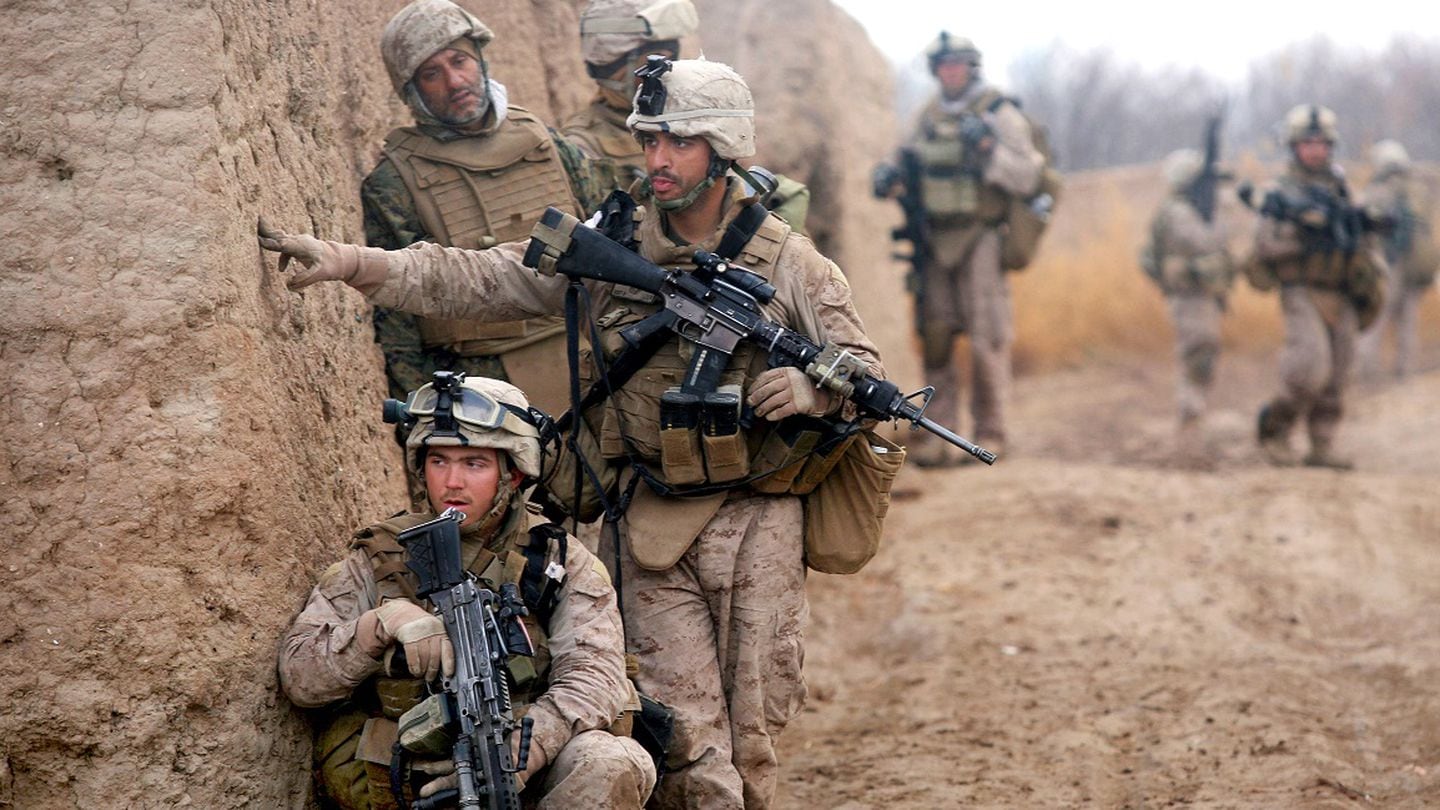
Navy’s next amphibious ship named for Marines’ Helmand province fight
The Navy will honor the Marines and sailors who served in Afghanistan with the name of the next America-class amphibious ship.
The Navy will name its next amphibious assault ship in honor of the Marines, Navy corpsmen, allies and partners who served and died in Helmand province, Afghanistan, the Navy secretary announced Thursday.
In unveiling the name, Carlos Del Toro called back to his late 2022 announcement that the America-class amphibious assault ship LHA-9 would be named the USS Fallujah, after the Marines who fought in the first and second battles of Fallujah and more broadly who served in Iraq.
Naming a ship for Helmand province will recognize “the bravery and sacrifice of our Marines and our sailors who fought for almost 20 years in the mountains of Afghanistan,” Del Toro said in his remarks at the Modern Day Marine conference in Washington.
Trish Smith, the wife of Marine Commandant Gen. Eric Smith, will serve as the ship’s sponsor. She will see the ship through all its construction-related milestones and support the ship and its crew once it joins the fleet and begins operating around the world.
What naming a ship after Fallujah means to those who fought there
The Navy awarded HII’s Ingalls Shipbuilding a $130 million contract in November 2023 to begin buying long-lead materials for the ship.
Smith gave an emotional accounting of the meaning of the ship’s name on Thursday, following the secretary’s announcement.
He called the region — which was the focus of Marines’ operations that at its height involved a full Marine expeditionary force forward, and more than 19,000 Marines and sailors — “the heart of the opium trade, a Taliban stronghold, and a terrain as rugged and formidable as any on earth.”
“And yet, it was there that our Marines and sailors and allies and partners showed what it means to be at the tip of the spear,” Smith said. “It was there that another generation of warriors added to the storied history of our Marine Corps.”
Smith spoke of Medal of Honor recipient Cpl. Kyle Carpenter, who used his body to shield others from a grenade explosion in Marjah, Afghanistan, on Nov. 21, 2010.
He spoke of Sgt. Christopher Farias, who refused treatment for his wounds when his patrol base was ambushed in 2010 in Kajaki, Afghanistan. With fragmentation from a 73 mm recoilless rifle in his neck and shoulder, Farias climbed to a rooftop to coordinate his Marines’ fire and maneuver to repel the assault, in “true Marine fashion,” Smith said.
And the commandant spoke of Lance Cpl. Donald Hogan, who was patrolling a road on Aug. 26, 2009, when he spotted an insurgent preparing to detonate a roadside bomb. He protected a nearby Marine from the blast and remained in the blast zone to warn fellow Marines. Hogan died in the explosion, but he saved the rest of his squad.
“Three hundred and sixty-six Marines would lose their lives to hostile action in Afghanistan during the years of the Helmand campaign, and almost 5,000 more were wounded,” Smith said.
But beyond fights on the battlefield, the commandant said they trained Afghan counterparts, supported local governance and helped develop infrastructure.
“As we reflect on these years of hard-fought victories and painful losses, it is crucial to remember why we fought,” Smith said. “Our mission was to deny a safe haven to terrorists who would harm the United States, and support the Afghan people in their quest for peace and stability. It was about what they might one day become.”
Smith did not directly address the fall of Kabul in 2021 or the emotional reaction by many Marines who had served there and families of those who died there.
But the commandant told the audience, “The legacy of our Marines in Helmand is not defined merely by the ground that was gained or lost, but by the spirit they embodied and the lives they touched. They fought with honor, they served with compassion, they led by example, and they made a difference in this world.”
To the families of the fallen, Smith said, “Through the naming of LHA-10 as the USS Helmand Province, your sacrifices will never be forgotten and their legacy will endure through the generation of Marines that follow.”
Sergeant Major of the Marine Corps Carlos Ruiz said in a video posted to Instagram on Thursday, “This name not only honors the battles won and the successes of our units in the Helmand province, but it also honors the names of those who left blood, sweat, tears and even their lives on the battlefield. The stories of what Marines did in combat are epic and more often today are not shared enough.”
The legacy of the fighting in Helmand, Afghanistan, is personal for Ruiz, the senior enlisted Marine.
On Oct. 28, 2009, he was the first sergeant for Lima Company within 3rd Battalion, 4th Marines, in the province, he said in the video.
That day, he was the vehicle commander of a shock trauma platoon. While he was on his way to recover Marines who had been wounded by improvised explosive device attacks, the vehicle that was supposed to clear his way to the landing zone also was hit.
A Marine kicked open the hatch of the vehicle and pointed at Ruiz with his minesweeper. Undaunted by whatever injuries he may have sustained in the recent blast, the Marine told Ruiz to follow him to the landing zone, and he cleared the way.
There were 11 casualties from the explosions that day, ranging from routine injuries to deaths, the sergeant major said.
“It’s a story for me that I’ll never forget,” Ruiz said, adding, “Thousands of you have your own stories to tell.”
Marine veteran Cole Lyle, who served in Helmand province as a diesel mechanic and wrecker operator and volunteered at Camp Bastion’s trauma hospital, said in a statement to Marine Corps Times on Thursday, “Today’s announcement gives those Marines and partners that served in Helmand an ironclad symbol of our victories; a permanent memorial honoring our collective losses; and a commemoration of the individual experiences and unbreakable personal bonds we forged in fire.”
“I’ll be proud to point at the U.S.S. Helmand one day and tell my son about the Corps’ role in Afghanistan and some of my personal heroes who served there,” he added.
Editor’s note: This story was updated at 4:30 p.m. Eastern Time on Thursday with comment from Lyle.
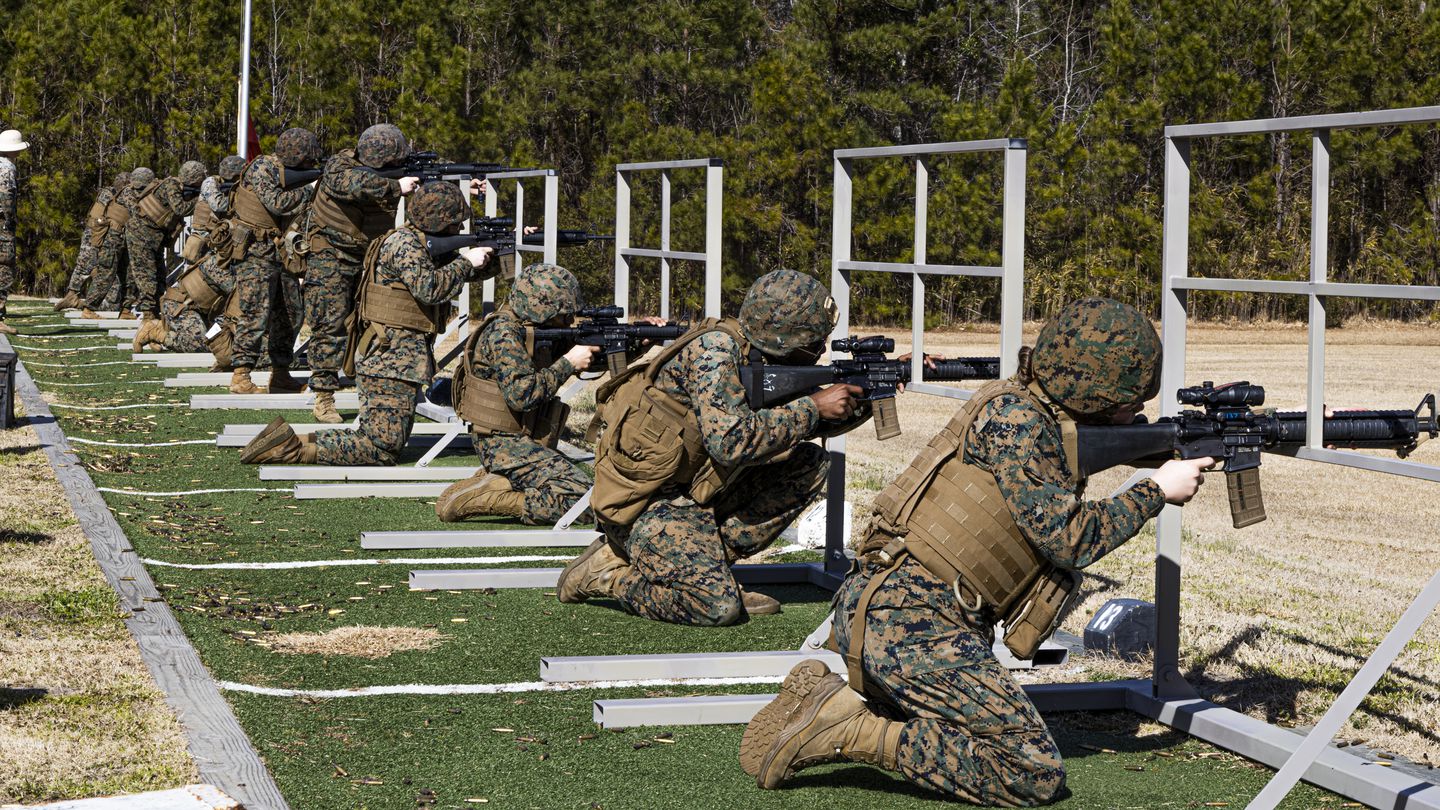
New tech aims to make Marines more lethal shooters
The tools include shot tracking, instant feedback, new simulators and devices that improve technique.
WASHINGTON ― Marines might soon see some new, high-tech tools to help them become more lethal shooters.
Top leaders in weapons training and marksmanship shared a series of technologies that the service is experimenting with that would give Marines more accurate and realistic ways to practice shooting while also instantly gathering data on how they’re performing and how to improve.
Col. Howard Hall, chief of staff for training and education command, said that a 2018 Operational Analysis Directorate study showed that Marines in combat in Iraq and Afghanistan only had a 30% chance of making a lethal hit on a target if the target or Marine was moving, if there were multiple targets or if the target was at an unknown distance.
The new Marine rifle qualification is here
Hall told the audience at the Modern Day Marine Expo that study helped drive changes to the annual rifle qualification in 2021 ― the first major overhaul in a century.
The changes included switching the order of fire from starting at the 100-yard line and moving back to the 500-yard line to the reverse, starting farther out and moving closer in, as a Marine would do in combat.
The qualification also added shorter range, quick drill fires at 25 yards, added moving targets and the use of barricades, among other changes.
The new tech that Marines are experimenting with aims to tighten those shot groups and speed up Marine shooting to make it more lethal. Much of that is coming in the form of making more training options off the range in weapons drills and simulators. Other efforts include more accurate data collection and real-time feedback for shooters to adjust their technique.
The package of tools includes the Mantis X10 and Unit 4 equipment that can be inserted into an M4 or M27 and allow users to practice dry fire, use a laser and feel recoil without using live rounds.
These provide corrections to shooting techniques the Marines never got from the “snap-in” barrel.
A snap-in barrel is a barrel, typically an empty 55-gallon oil drum or similar sized item that is painted white and then painted with small versions of the target shapes used on the rifle range. Those smaller shapes simulate the size of the target like what a shooter would see on the range but at a shorter distance.
Marines then dry fire their rifles on those targets, practicing breath and trigger control.
“This is a digital snap-in barrel, and it provides you feedback,” said Col. Greg Jones, commander of weapons training battalion.
The Mantis system is being experimented with the Marine Corps recruit depot shooting ranges at Parris Island, South Carolina, and Edson Range, Camp Pendleton, California.
The joint marksmanship assessment package uses either a smartphone or tablet, with software application, an acoustics measuring device and smartwatch to monitor movement.
It measures shooting in the short-range portion of the annual rifle qualification that goes from the 25 yards in. The joint marksmanship assessment package can gather up to a company’s worth of data in under four hours and develop plans to improve marksmanship based off the results.
The Corps is currently looking at a radar-based system that also would measure shooting from the 500-yard to 100-yard line for the rifle qualification. If both are adopted, it would fully digitize rife qualification.
In November 2023, the Corps awarded an $11.3 million contract for the advanced small arms lethality trainer to Valiant Integrated Services. The simulation system adds more scenarios and capabilities to the long-running indoor simulated marksmanship trainer.
The advanced small arms lethality trainer will be fielded to all major installations such as Camp Lejeune, North Carolina; Camp Pendleton, California; Quantico, Virginia and Marine Corps Air Ground Combat Center, Twentynine Palms, California.
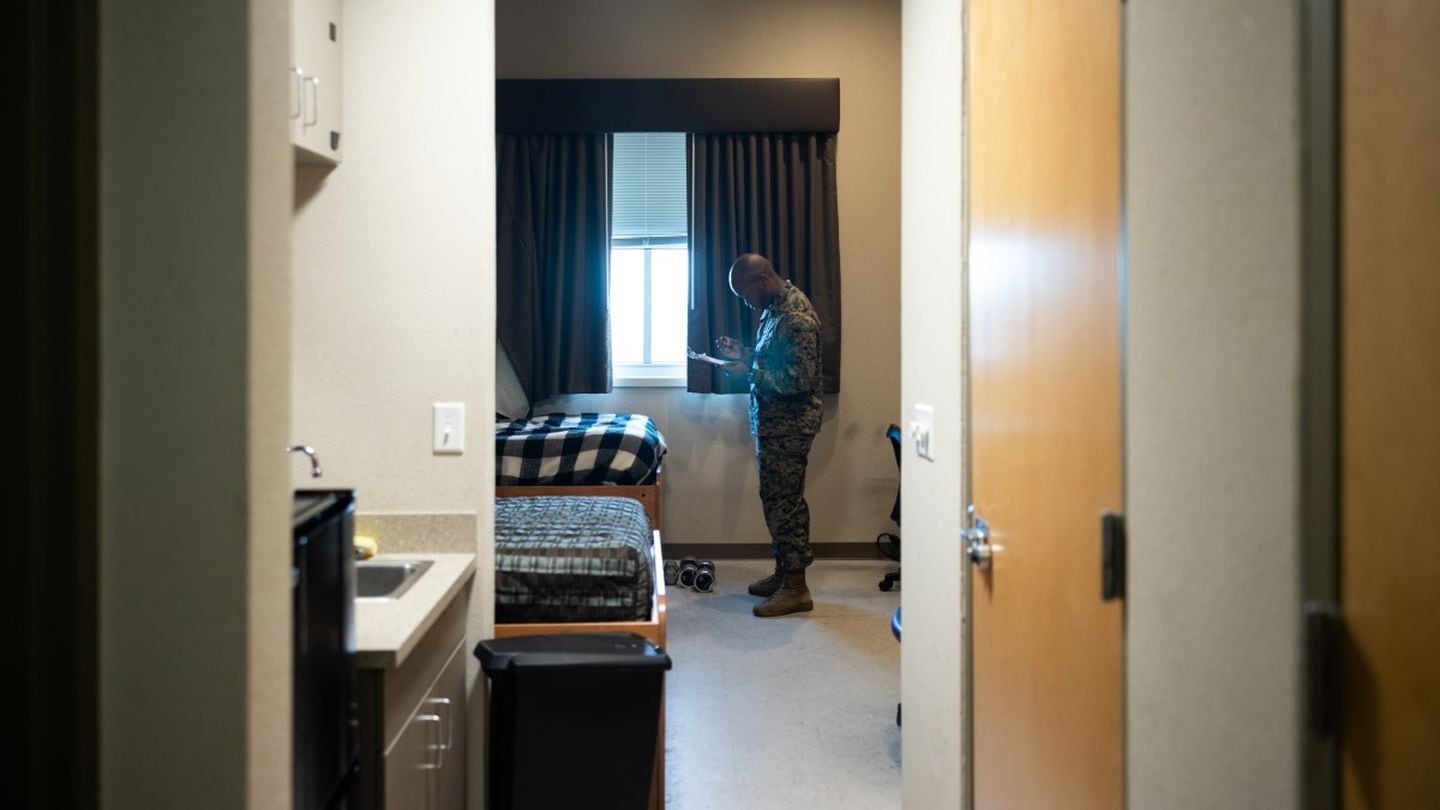
How the Marine Corps’ barracks got to be so bad, according to 2 generals
Years of spending more on weapons systems than on quality of life was one reason, the Marine Corps’ budget chief said.
WASHINGTON — Now that the Marine Corps is engaged in a sweeping effort to fix problems in its barracks buildings, Marine leaders have offered some explanations for how the barracks got to be substandard in the first place.
As the Marine Corps’ budget chief sees it, one reason was years of spending more on weapons systems than on quality of life.
“For too long, because we were taking risk in those types of initiatives in order to buy the weapons systems, they became more and more in disrepair,” Lt. Gen. James Adams, the deputy Marine commandant for programs and resources, said about the barracks at a panel discussion Wednesday at the Modern Day Marine conference in Washington.
As the land wars in Iraq and Afghanistan were ending, the Marine Corps began to prepare for the next big conflict, which it anticipated might be a faceoff with the powerful Chinese military in the Indo-Pacific. In 2020, then-Commandant Gen. David Berger launched the Force Design initiative to update the Corps’ structure, training and platforms for that potential fight.
Meanwhile, the barracks were in bad shape.
A Government Accountability Office report in September 2023 found widespread problems, such as mold and water issues, in barracks across the military. Media reports in ensuing months highlighted dilapidated, moldy, vermin-infested and otherwise insufficient barracks in the Marine Corps.
Commandant Gen. Eric Smith, who took the helm of the Corps in summer 2023, has made improving the barracks a top priority.
As part of the Barracks 2030 initiative, the Marine Corps plans to consolidate Marines in the better buildings and demolish the worse ones, install professional barracks managers and spend more money on restoring barracks. In February, the Corps ordered each barracks room to be inspected “wall to wall” so it could gather data about the problems and fix some of them immediately.
Here’s how the Marine Corps’ ‘wall-to-wall’ barracks inspections went
In response to a Marine Corps Times question about who was at fault for the previous underinvestment in barracks, Adams said, “I wouldn’t say it’s a fault.”
Previously, the Corps had spent approximately $200 million a year toward maintaining and modernizing its living facilities, he said. That wasn’t enough to stave off the degradation that happens to buildings over time.
But it was hard to justify receiving additional funds for barracks, especially as the force shrank as the military withdrew from Middle East wars, according to Adams.
“We didn’t have the data to say, ‘How are we tracking the facilities’ condition in detail to defend more than $200 million a year for that?’” Adams said. “But we did have the data to say, ‘We need this Force Design weapons system or this modernized vehicle or this modernized weapon platform.’”
For fiscal year 2025, the Marine Corps is seeking from Congress $274 million for restoring barracks, a $65 million increase, and it has signaled via its budget wish list that it would like a further $230 million for that effort.
One major asked the panelists, who had a collective eight stars on their shoulders, if any Marine leaders would be held formally accountable for the problems with the barracks, which he characterized as “systemic” and “organizational.”
“I’m the organizational failure that happened,” said Maj. Gen. David Maxwell, who has served as commander of Marine Corps Installations Command since July 2022.
Maxwell said he had been unable to communicate the state of the barracks to senior Marine leadership because he had been limited by having merely anecdotal data. That changed after his command launched the Corps-wide inspection, which determined approximately half of barracks rooms were only “partially mission-capable,” meaning they had fallen short in at least one aspect of living standards.
Asked by Marine Corps Times why the Corps hadn’t assembled the necessary data on the barracks earlier, Adams said, “We didn’t have the tools that we needed to actually collect up the data and to organize it in a way that’s usable.”
Those advanced analytics tools include the big-data platform Advana, Adams said. The Defense Department has used that tool for some purposes since at least 2019, according to congressional testimony.
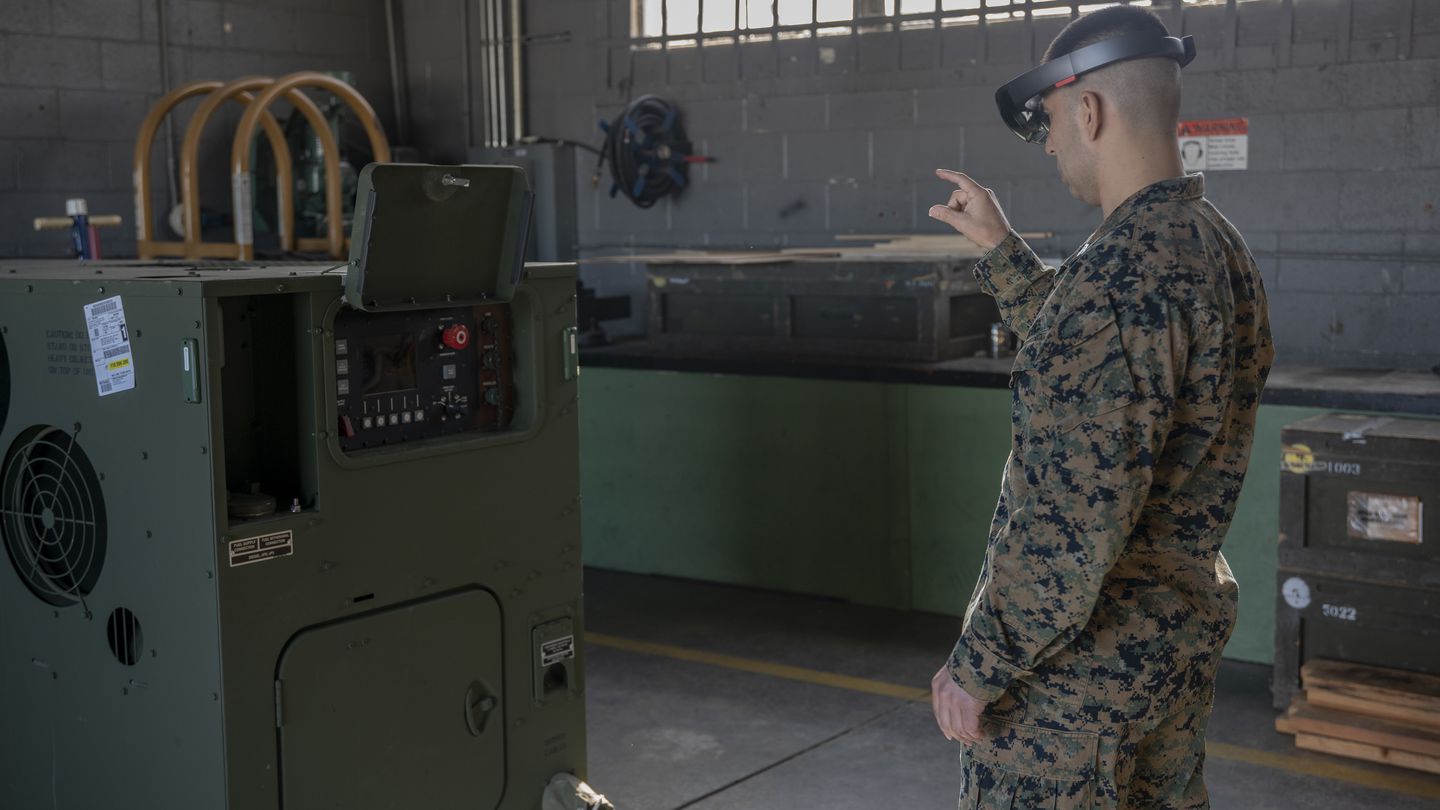
Marines test mixed reality ‘telemaintenance’ for battlefield repairs
Using mixed reality headsets, technicians and Marines can 'see' the same view and conduct repairs.
WASHINGTON — Marines are experimenting with mixed reality to use “telemaintenance” connect expert technicians with Marines in the field fixing complex gear.
Brig. Gen. Michael McWilliams, head of Marine Corps Logistics Command, told the audience here at the Modern Day Marine Expo Wednesday that in March Marines at Camp Lejeune, North Carolina, in the unit he commands, 2nd Marine Logistics Group, began the experimentation.
“The impacts that this can have across the force are tremendous,” McWilliams said.
Marines expect 'big year' for drone, ship and logistics testing
The move comes as the Corps wants to push out small, self-sustaining teams across the Pacific and other regions. And if things break, it’ll be up to the Marines on hand to fix them.
McWilliams said that the plan is to push the telemaintenance work across units at Camp Lejeune, North Carolina, through the summer and look to expand it across the Marine Corps afterward.
Maj. Gen. Keith Reventlow added that using depot-level experts on equipment such as weapons systems to work with Marines in the field keeps that gear operating where it’s needed most rather than having to be shipped back to the depot and repaired.
Marines are using mixed reality goggles worn by the maintainer and the expert technician. That way each can “see” the same view and the expert can walk the Marine through the procedures to troubleshoot or repair an item, Reventlow said.
But, Reventlow noted, Marines are not the first to conduct telemaintenance. The Army has been assisting Ukrainian maintainers during their war with Russia to fix systems on or close to the front lines using remote connections.
Also, the Navy began testing telemaintenance on its aircraft carriers in 2020, the U.S. Naval Institute reported at the time.
And, in the contested logistics environment where Marines expect to fight, sending stuff back may not be an option.
Getting repair parts and supplies to Marines is equally challenging.
In recent years, the Corps has shifted its targeting and striking methods from a “kill chain,” a linear step process to finding, tracking, targeting and destroying threats to a “kill web,” in which multiple shooters and sensors through a web-like network optimize the best weapon to strike the intended target.
“Kind of like Amazon on steroids and lethal,” said Brig. Gen. Phillip Frietze, assistant deputy commandant of combat development and integration
The logistics leaders are taking the same approach but with beans, bullets, bandages and blood.
In 2023, when Frietze commanded 1st Marine Logistics Group in the Pacific the unit set up a sustainment web that stretched from Darwin, Australia to the Philippines, using commercial, military, U.S. and partner supply points in the region.
The web now sources blood supplies for emergencies locally rather than shipping in from out of the region, Frietze said.
At the same time, the web concept is being helped by connecting data across the inventory, Frietze said.
No longer is a Marine coming to a company gunnery sergeant in supply and listing off their supply needs, filling out requisition forms and going up the chain of command one unit at a time.
Now that gunny will have a tablet that automatically feeds in the supply items a unit needs and routes the request to the best supplier in the web, much like the “kill web” concept.
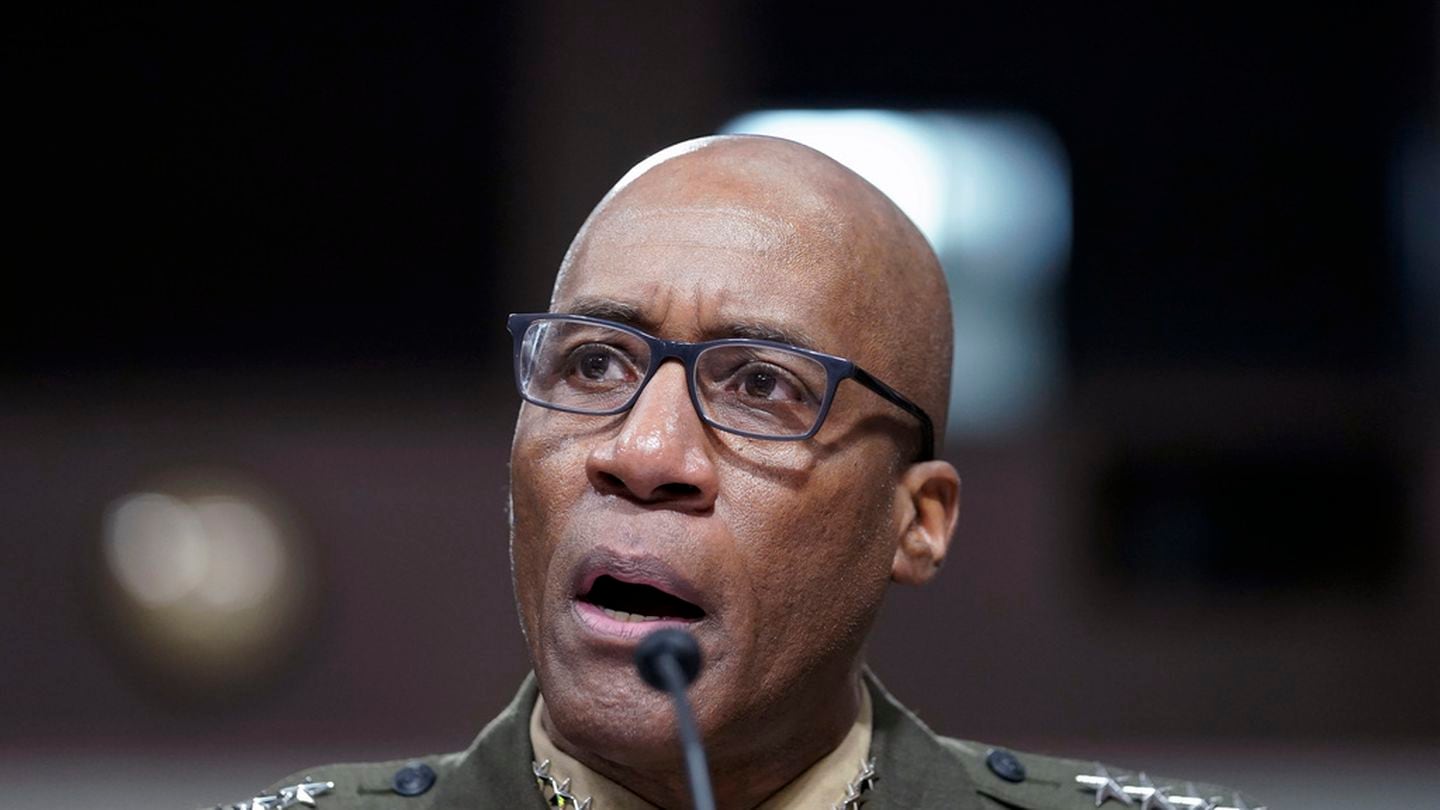
US says it will return to Chad for talks to keep troops in the country
The U.S. said last month it was withdrawing most of its 100 troops from Chad after the government questioned the legality of their operations.
ACCRA, Ghana — The U.S. military plans to return to Chad within a month for talks about revising an agreement that allows it to keep troops based there, an American general said Wednesday.
The U.S. said last month it was withdrawing most of its contingent of about 100 troops from Chad after the government questioned the legality of their operations there. This followed Niger’s decision to order all U.S. troops out of the country, dealing a blow to U.S. military operations in the Sahel, a vast region south of the Sahara desert where groups linked to al-Qaida and the Islamic State group operate.
U.S. Marine Corps Gen. Michael Langley, the commander of U.S. Africa Command, made the comments to reporters in Ghana at the second annual African Maritime Forces Summit, or AMFS.
He said the withdrawal of U.S. troops from Chad was expected to be temporary, and Chad had communicated to Washington that it wanted to continue the security partnership after the presidential election there.
“We’ll come back for discussions within a month to see in what ways, and what they need, to be able to build further in their security construct and also against terrorism,” Langley said.
Government officials in Chad couldn’t immediately be reached for comment. The presidential election in Chad is scheduled for Monday, and analysts expect the incumbent to win.
Chad’s interim president, Mahamat Deby Itno, seized power after his father, who ran the country for more than three decades, was killed fighting rebels in 2021. Last year, the government announced it was extending the 18-month transition for two more years, which led to protests across the country.
Langley said the withdrawal of U.S. forces was a temporary step “as part of an ongoing review of our security cooperation, which will resume after Chad’s May 6 presidential election.”
Both Chad and Niger have been integral to the U.S. military’s efforts to counter violent extremist organizations across the Sahel region, but Niger’s ruling junta ended an agreement last month that allows U.S. troops to operate in the West African country.
Niger is home to a major U.S. air base, in the city of Agadez, about 550 miles from the capital, Niamey, using it for manned and unmanned surveillance flights and other operations. The U.S. has also invested hundreds of millions of dollars in training Niger’s military, since it began operations there in 2013.
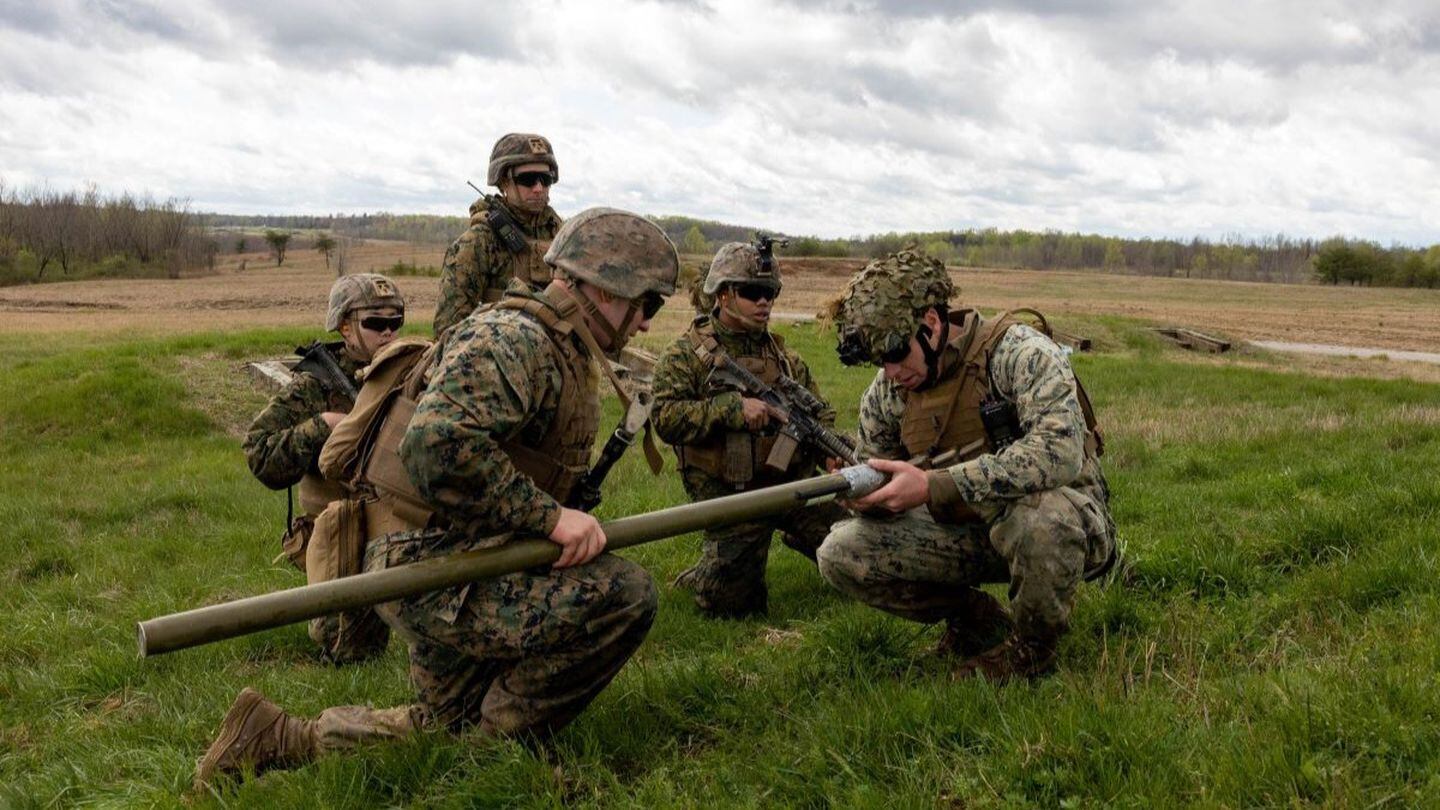
How the Corps is trying to get exiting Marines to stay as reservists
The Corps already has doubled the number of Marines who enter the Reserve right after the end of their active service via the Direct Affiliation Program.
WASHINGTON — The Marine Corps wants seasoned Marines to continue being Marines, even if just for one weekend a month.
As the service is updating its approach to fighting in preparation for a potential war with a powerful adversary like China, it also is trying to keep Marines who have the training and experience necessary for more complex operations. One piece of that personnel-focused effort, called Talent Management, is making better use of the Marine Corps Reserve.
The Corps has a plan to stop Marines from leaving. Is it working?
“Now we’re thinking, ‘How can we tap into the skills that (reservists) have, whether they’re militarily gained or they got them on their own?’” said Kerry Mengelkoch, the director of the Corps’ Talent Management Oversight Directorate and a Marine veteran, said Tuesday at the Modern Day Marine conference in Washington.
The Corps already has doubled the number of Marines who enter the Reserve right after the end of their active service through the Direct Affiliation Program, Mengelkoch said.
In 2022, approximately 350 Marines became reservists through that program, according to Mengelkoch. The following year, after Marine commanders were given missions for the number of their Marines who ought to go through the program, it was about 750.
The Corps expects to double that number again in 2024, Mengelkoch said.
“In the past, we really didn’t speak very directly and deliberately with our Marines, once they were making a decision to come off of active duty,” Mengelkoch said. “We may have emphasized transitioning to the civilian component without emphasizing, ‘And while you’re there, you can also … stay Marine and join the Marine Corps Reserve.’”
Marines who go through the Direct Affiliation Program are eligible for bonuses, health care benefits, and guaranteed duty stations and jobs. The idea is to lure Marines to continue contributing their skills to the Corps even once they have left active duty.
In 2023, one Marine who went that route was Staff Sgt. Ramon Santiago, a joint terminal attack controller and fires chief, according to a Marine Corps news release. In his nine years on active duty, he had deployed five times, racking up experience in his technical job.
“I’m ready to move on to the next chapter of my life, but still want to give back to the Marine Corps,” Santiago said in the release.
Bolstering the Corps’ Reserve is one of the five priorities Commandant Gen. Eric Smith highlighted in his April 2 guidance to the force.
The Marine Corps also is launching a pilot program that allows active duty Marines to be assigned to a Reserve unit for a set period of time, during which they can continue to compete for promotions, with a plan to return to active duty after that, Mengelkoch said.

How to find a civilian career after leaving the military
When their service comes to an end, veterans must make an important decision: what they want in a civilian career.
Lisa Elswick’s boss at United Service Organizations was an Air Force veteran of 26 years when he retired from his distinguished military career, ready to take on a new challenge in civilian life.
There were only a few wrinkles in his plan.
“When he retired, he had never interviewed for a job,” said Elswick, the vice president of transition programs for the USO. “He didn’t have a resume. He never wore a suit. It’s things that those of us that have lived in the civilian world all of our lives take for granted. It’s just part of the process.”
“What’s next?” and “How should I proceed?” are common feelings shared by many veterans, regardless of their age and experience while in the military. Service members spend their time in the military following orders, having many decisions made for them. When that comes to an end, veterans must make an important decision: what they want in a civilian career, if they don’t intend to go to school.
Many veterans will pursue a career that highlights their military experience, like medics pursuing an occupation in healthcare, or pilots working for an airline.
“But if you’re an infantryman, what are you going to do?” Elswick said.
Veterans should consider the answer before separating from the military, and develop a plan to pursue that goal. Organizations like the USO and Hire Heroes are ready to help service members with that transition. Another group, Veterans Transition Support, offers free career-training programs that help veterans with coaching to search for jobs, writing resumes and cover letters and how to prepare for interviews.
VTS volunteers like veteran Merlyn Cruz-Feliciano, who have gone through the same change, can relate to the struggles others can experience when in the job market.
“I loved my job as a logistician when I was in the military,” she said. “I was very good at it, but I just knew in my heart that was not what I wanted to do. Unfortunately, a lot of veterans kind of stick with what they know.”
Cruz-Feliciano eventually decided to pursue a masters degree in mental health therapy.
For veterans who want to enter the workforce, getting the guidance needed to help find the right career is critical. The next — and maybe most important — step is showing a veteran how to market their skills by building an impressive resume tailored to the job they want.
“Translating military skills to a civilian resume is a major, major struggle,” Elswick said. The USO also offers interview preparation, including a website that uses artificial intelligence to give real-time feedback.
For veterans unsure of what career they want, Elswick said trending jobs include government contracting, cybersecurity, health care and law enforcement.
“Federal resumes are very different from civilian resumes, and you need a very specialized skill set to get it through their applicant tracking system,” Elswick said.
In addition to constructing a solid resume, veterans should set up a LinkedIn account to connect with peers and companies that are looking to hire. Indeed is another popular site for seeking out available jobs. Another resource for veterans is Military Friendly Employers, which lists more than 1,500 organizations that are designated as military-friendly businesses.
Veterans may consider pursuing certifications that could help their military skills transfer to the civilian world as well. Participating in a Skillbridge program, a fellowship that can act as an off-ramp between military and civilian employment, is another option as well. And seeking out mentors who can offer advice for navigating the job hunt and interview processes, plus daily life in the civilian workforce, can be invaluable.
“There are actually jobs everywhere,” Elswick said. “But how do we prepare our veterans to enter the civilian workforce?”

Marines create new monitor job to support dual-military couples
If you get orders to North Carolina, but your spouse has orders to Hawaii, there’s good news: the Marines’ new dual-military monitor may be able to help.
If you get orders to Camp Lejeune, North Carolina, but your spouse has orders to Hawaii, there’s good news: the Marines’ new dual-military monitor may be able to help.
The new post, expected to be operational before summer, will exist to make it easier for the more than 4,300 enlisted Marines married to another active-duty service member to meet career goals and manage permanent change of station moves in a mutually beneficial way, according to Maj. Christopher Dippel, deputy section chief for the Corps’ enlisted assignments branch. The move is part of a broader effort by the Marine Corps to be responsive to the needs of dual-military couples, signaling that they are not just an afterthought or on their own while navigating a complex and decentralized bureaucracy.
Marine leaders also hope the new role will support retention at a well-known pain point.
“PCS is a large driver for potential departure from the service,” he told a panel at the March quarterly meeting of the Defense Advisory Committee on Women in the Services.
More could be done to help dual-military couples, DoD IG reports
It’s a bigger deal for the Marine Corps than for the other services. Nearly 60% of married female Marines are in a dual-military marriage, compared to a Defense Department-wide average of 45.3%, according to Dippel’s presentation.
A 2021 survey of active-duty service members with a military spouse showed that 88% of Marines lived with their spouse while not deployed, the lowest of any service except for the Army at 86%, according to data from the Pentagon’s Office of Personnel Analytics. The Marine Corps also had the highest proportion of respondents, 14%, who said they lived in a separate home from their spouse, double the Defense Department average of 7%.
Policies and protocols related to co-locating military couples are “critical for personal and professional longevity,” Dippel’s presentation stated.
According to Manpower and Reserve Affairs spokeswoman Capt. Sarah Eason, the dual-military monitor is a staff sergeant who is now in training to execute the first-of-its-kind role.
Once officially on the job, the monitor will help dual-military Marine couples report their marriages to administrative centers, submit co-location requests and navigate separation waivers, Eason said. The monitor can also offer career options to couples looking to co-locate, advise on timelines and educate Marines on programs that can help them, she said.
Without a dedicated monitor, Marines in dual-military marriages have had to navigate the Corps’ decentralized system of 75 different assignment monitors and manage the liaising and communication around aligning two different career tracks, Dippel said. The new monitor role will take on much of the responsibility of managing communication, both across units within the Marine Corps, and, in the case of couples with a spouse in another military branch, across service lines as well.
“We envision that [such Marines] will have liaisons within our sister service’s monitor and detailer networks,” Dippel said. And with all the planners in communication, “we can target and find the right billet for both of those service members at the right time.”
This move to better meet the needs of dual-military couples is part of a larger shift within Manpower and Reserve Affairs, according to Dippel’s presentation.
A system modernization effort underway, he said, will reframe the way orders for dual-military couples are processed, making it more akin to the system in place for troops in the exceptional family member program. Under that program, serving military families with special-needs members, the orders process includes a review to ensure the post receiving the service member has access to the medical or educational services the family requires.
“We envision that building this into our next systems architecture will ensure that any time a set of orders for a dual active-service couple is written, that will automatically get sent directly to the dual active-service monitor,” Dippel said. “That gives that monitor the opportunity to ensure that policies are being met, and that the needs of both of those service members are being met with that set of PCS orders.”
This is not always easily done, particularly with more senior couples for whom the available billets for a new assignment might be limited. Dippel said the Corps will work with couples to meet co-location needs while also ensuring the needs of the service are met. He said one solution in more complex situations could be an exception to policy that allows for a tour shorter than the standard 36 months, for example, to keep the couple together as much as possible.
“The Marine Corps firmly does believe that geographic stability does encourage retention,’” he said.
Later in 2024, Dippel said, the Marine Corps plans to publicize the changes in a “strategic narrative” video messaging campaign so that both dual-military Marine couples and their leaders understand how the system is supposed to work.
Across the Defense Department, retention of military talent has increasingly been a focal point for the services, particularly in light of historic recruiting challenges. Efforts like the recent bipartisan Quality of Life panel and accompanying congressional hearing emphasized the connection between living conditions and military career satisfaction.
The Marine Corps is not the first to try to ease the way for dual-military couples: the Married Army Couples Program allows dual families to establish a recognized “joint domicile” to support co-location.
Air Force and Navy leaders have said they work to give dual military couples special basing consideration, although without a dedicated liaison for the purpose.
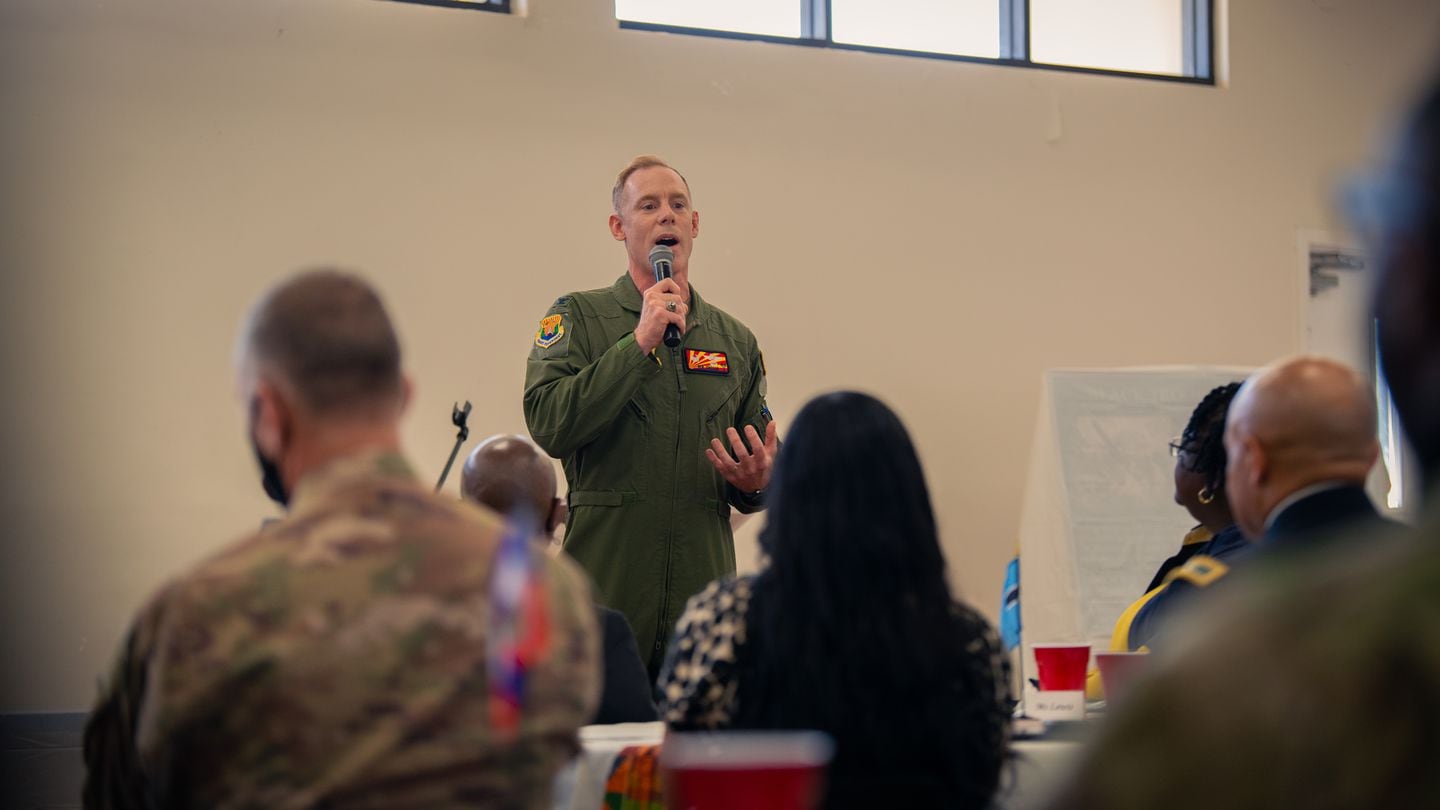
With promotion still blocked, Air Force officer’s eligibility extended
Col. Ben Jonsson's promotion window was set to expire. The Pentagon just granted the him another year of eligibility.
The officer whose promotion continues to be the last to remain blocked by the Senate now has another year to see if he’ll be made brigadier general.
The Office of the Under Secretary of Defense for Personnel and Readiness approved a one-year extension of Col. Ben Jonsson’s promotion eligibility period, a defense official said Tuesday. The eligibility window was set to expire Wednesday and will now end May 1, 2025. Defense Secretary Lloyd Austin requested the extension, the defense official said.
Without the extension, Jonsson was expected to either end his military career or serve as a colonel until he reached mandatory retirement.
Jonsson, who has served in the Air Force for 25 years, was nominated in January 2023 to brigadier general, a one-star position that less than one-half of 1% of officers reach. The Defense Department assigned him to Air Mobility Command as the chief of staff, a one-star billet to work directly for Gen. Mike Minihan and provide staff support to 107,000 airmen.
Just one month later, Alabama Republican Sen. Tommy Tuberville paused the promotions of Jonsson and hundreds of other officers to protest the Pentagon’s abortion access policies. Tuberville lifted his hold Dec. 6, 2023, and in subsequent months the promotions cleared the Senate. Jonsson’s is the last to remain blocked.
Shortly after Tuberville lifted his hold, Missouri Republican Sen. Eric Schmitt placed another block on Jonsson’s promotion, citing the colonel’s support for the military’s diversity, equity and inclusion policies. In a statement shortly after Schmitt announced his hold, Will O’Grady, Schmitt’s press secretary, said the senator has “long been an advocate for eradicating these DEI programs,” which he described as divisive among service members.
Jonsson received criticism last year from the Heritage Foundation, a conservative think tank, about a commentary he wrote for Air Force Times following the murder of George Floyd in 2020. In the piece, Jonsson urged his fellow white colonels to acknowledge racial disparities in the service.
“Dear white colonel, you and I set the culture, drive the calendar, and create the policies at most of our installations around the Air Force,” Jonsson wrote. “If we do not take the time to learn, to show humility, to address our blind spots around race, and to agree that we are not as objective as we think and our system is not as fair as we think, then our Air Force will not rise above George Floyd’s murder.”
Since Schmitt put a hold on the promotion, several of Jonsson’s Air Force supervisors have reached out to the senator to urge him to drop the blockade. Other current and former Air Force leaders have spoken out in support of Jonsson and warned about potential consequences the hold could have on military retention and how Congress handles future promotions.
“What I fear is that now, when leaders need to speak out about tough issues, they’ll think twice when they look at what’s happening to him,” said retired Chief Master Sgt. Kaleth Wright. “I think it’s a travesty. Senior leaders at all levels should feel free to speak out about tough issues, whether it be race or something else.”
Peter Feaver, a Duke University professor and author of a book on civil-military relations, argued that Schmitt’s hold is likely setting a precedent. An extended block on Jonsson’s promotion could prompt other senators to implement holds of their own, he argued.
“This will be seen by many, many military officers as excessive. It will be seen by them as politicizing, and as dragging them into a partisan political war,” Feaver said. “It’s going to make Democratic partisans think the same, and it’s going to whet their appetite to exact revenge.”
It remains uncertain whether Schmitt will lift his hold sometime in the next year. Schmitt hasn’t elaborated on his reasons for the blockade, and the senator’s office has not responded to multiple requests for comment.
This story was produced in partnership with Military Veterans in Journalism. Please send tips to [email protected].
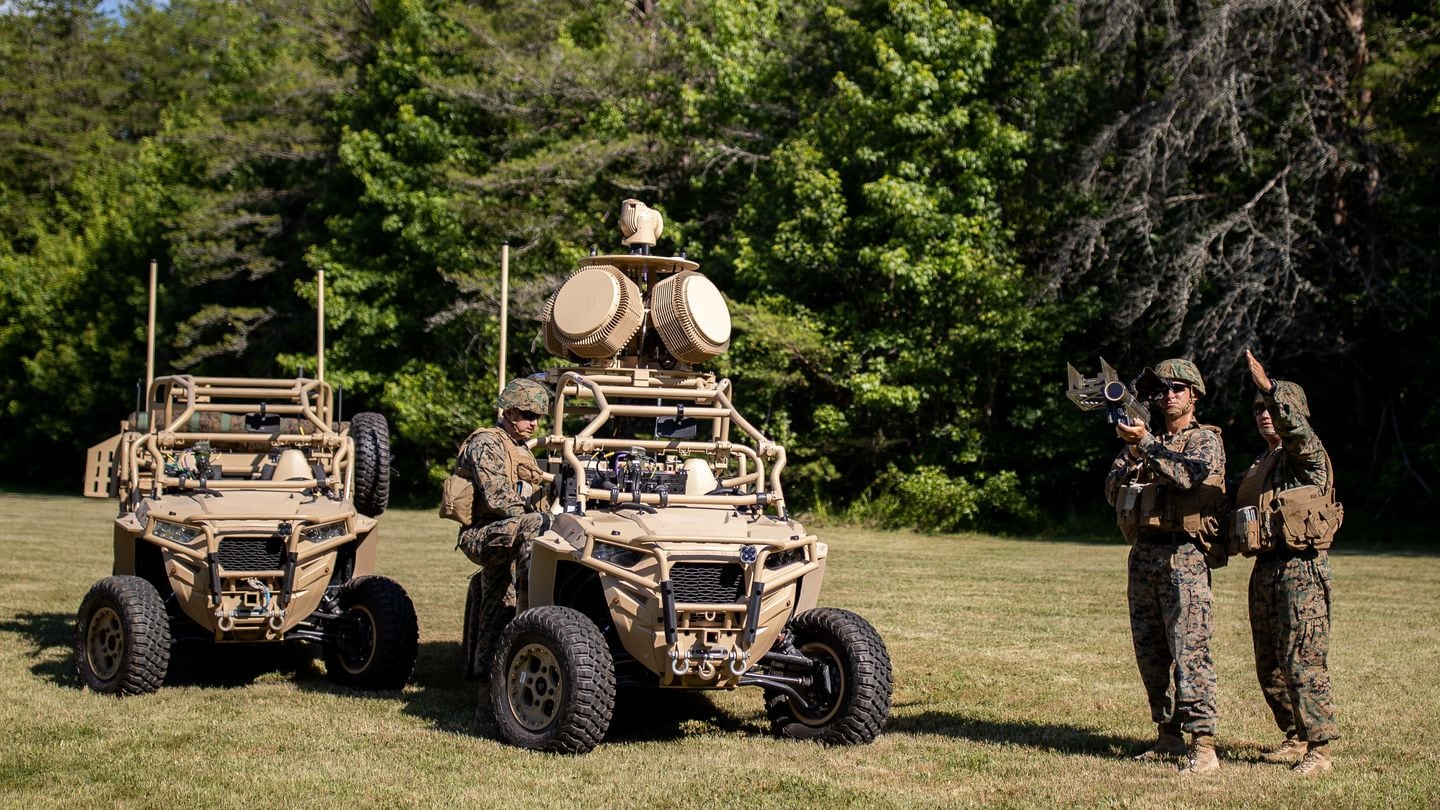
US Marine Corps opens new center to more rapidly get tech to operators
The Marine Corps is trying to speed up its modernization through a new Fusion Center and a capability-centric acquisition approach.
The U.S. Marine Corps has established a new office that brings together science, technology, requirements and acquisition professionals to help streamline how the service fields new technology.
The Fusion Center, located at Marine Corps Base Quantico, Virginia, allows for discussions about what technology is becoming mature enough to use versus what is useful to the Corps, leaders said Tuesday during a panel discussion at the Modern Day Marine conference in Washington, D.C.
Brig. Gen. David Walsh, who runs Marine Corps Systems Command, said he was told two years ago upon taking on the role to “pick up the pace” for acquisition.
“That involves getting closely involved with what’s going on over at the labs, over with our industry partners, and seeing where the cutting edge of technology is, prepping ourselves, getting ourselves ready to accept that technology as it matures,” he noted.
With this Fusion Center in place, the team is expected to ensure it’s using money to develop the technologies that will fill the most critical capability gaps. In addition, the group is to consider up front the doctrine, training, sustainment strategies and more that go along with any new technology.
Generally, Walsh said, the tech itself matures faster than other aspects — doctrine, organization, training, materiel, leadership and education, personnel, and facilities (DOTMLPF).
But in trying to achieve rapid acquisition, trade-offs are often required.
“You can get it to the Marines right now, get the first iteration out there, get the first unit equipped, and then training will come along” after the fact, he said. “Or you wait for all those same DOTMLPF considerations to be lined up, ready to go, and then you field” the new tech on a slower timeline.
But, he noted, the Fusion Center gives the acquisition community an improved look at what technology may be on the way in order to reduce trade-offs, especially if officials can start considering training or sustainment implications while researchers mature the tech.
Stephen Bowdren, the service’s program executive officer for land systems, said by peeking down the science and technology pipeline, his team can consider new technology for incorporation into existing programs via an engineering change proposal or as part of a tech refresh effort. Alternatively, he added, his office would consider what technology might require standing up a new program of record.
While the Fusion Center is meant to improve communication among the various communities, the Corps is also trying move along acquisition efforts faster and become more agile by focusing on acquiring capabilities rather than specific hardware solutions.
Bowdren also noted the new office could benefit how the service manages various portfolios.
For example, the Marine Corps needs a ground-based air defense system that includes sensors, target identification tools, and kinetic and non-kinetic effectors. But different Marine Corps formations in different geographies might have slightly different air defense needs, meaning Bowdren can rely on the Fusion Center to help him create a family of systems that collectively cover all the service’s needs within this broad capability set.

The Marine officer who saved 8,000 lives at the ‘Frozen Chosin’
'To me, it didn’t matter whether those were Chinese, Korean, Mongolian, whatever — they were the enemy.'
Kurt Chew-Een Lee spearheaded preparations in December 1950 for 500 Marines to embark on a daring rescue mission. The first lieutenant’s undertaking came during the vicious Battle of Chosin Reservoir, as tens of thousands of Chinese troops streamed in from North Korea and threatened to cut off an American unit.
Traversing five miles across treacherous mountainous terrain, Marines battled against blizzard conditions that cut visibility to almost zero. Temperatures oftentimes plummeted to 30 below.
Despite bullet wounds and a broken arm suffered during a previous engagement, Lee, along with his unit, went on to relentlessly engage the enemy while under intense fire. By the end, their exploits would help preserve a crucial evacuation route for American troops fighting as United Nations forces. Approximately 8,000 men were saved from certain death or imprisonment at the hands of the Chinese.
Born on January 21, 1926, in San Francisco, the slight-of-build Lee — all of 5-feet-6 inches tall and roughly 130 pounds — is believed to be the first Asian-American officer in Marine Corps history. Still, Lee “brought outsized determination to the battlefield,” according to an account in the New York Times.
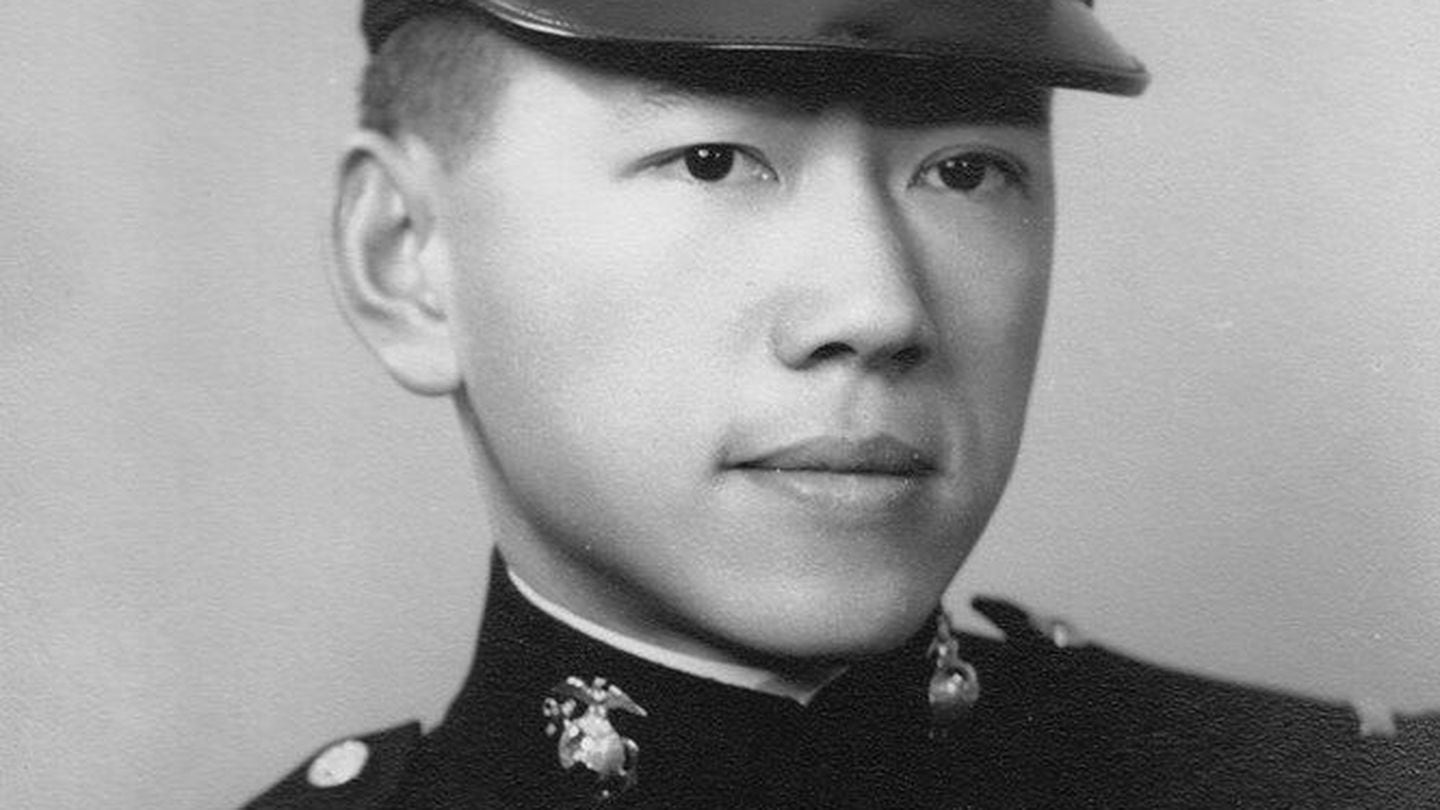
Lee, who enlisted in the Marines at the end of World War II, told the Los Angeles Times in 2010 that he identified most with the Corps due to its reputation of being first into battle.
“I wanted to dispel the notion about the Chinese being meek, bland and obsequious,” he said.
Lee was assigned during WWII as a Japanese language instructor in San Diego. Swallowing his disappointment at not being sent to the Pacific, he chose to remain in the Marine Corps after the war and commissioned as an officer in 1946.
As the U.S. entered into the Korean War in June 1950, Lee was placed in charge of a machine gun platoon that was tasked with advancing deep into North Korean territory.
Before the fighting began, many of Lee’s fellow Marines questioned whether he was capable of killing Chinese soldiers. Behind his back some even used racial epithets, calling him a “Chinese laundry man.”
For Lee, the questioning of his devotion to his nation was ludicrous.
“I would have … done whatever was necessary,” he told the Los Angeles Times. “To me, it didn’t matter whether those were Chinese, Korean, Mongolian, whatever — they were the enemy.”
Lee’s Chinese ancestry, however, came as a boon on the night of November 2, 1950. Conducting a solo reconnaissance mission amid heavy snowfall, he began to lob grenades and fire rounds at the enemy with the intent of exposing the location of Chinese soldiers who were firing upon his men.
Undetected, Lee crept up on the enemy outpost and utilized his working knowledge of Mandarin to confuse the enemy combatants, who hesitated briefly as Lee called out in their native tongue, “Don’t shoot, I’m Chinese.”
That pause allowed just enough time for Lee’s unit to reposition and drive back the Chinese. For this, Lee was awarded the Navy Cross, the second-highest honor a Marine can receive.
“Despite serious wounds sustained as he pushed forward, First Lieutenant Lee charged directly into the face of the enemy fire and, by his dauntless fighting spirit and resourcefulness, served to inspire other members of his platoon to heroic efforts in pressing a determined counterattack and driving the hostile forces from the sector,” his citation reads.
Less than a month later, while Lee was still recovering in a field hospital from a gunshot wound to the arm he sustained during the early November fighting, the Chinese launched its Second Phase Offensive — aimed at driving the United Nations out of North Korea. Tens of thousands of Chinese forces converged on the mountainous region near the Chosin Reservoir, overrunning the nearly 8,000 American troops stationed there.
Undeterred by his wounds, Lee “and a sergeant left the hospital against orders, commandeered an Army jeep and returned to the front” to link up with the 1st Marine Battalion, according to the New York Times. Lee’s arm was still in a sling.
Using only a compass to traverse the snowy mountain terrain, Lee and his 500 Marines managed to find and reinforce the surrounded Americans, repeatedly driving back Chinese soldiers, according to the Times, and ensuring “the vastly outnumbered Americans were able to retreat to the sea.”
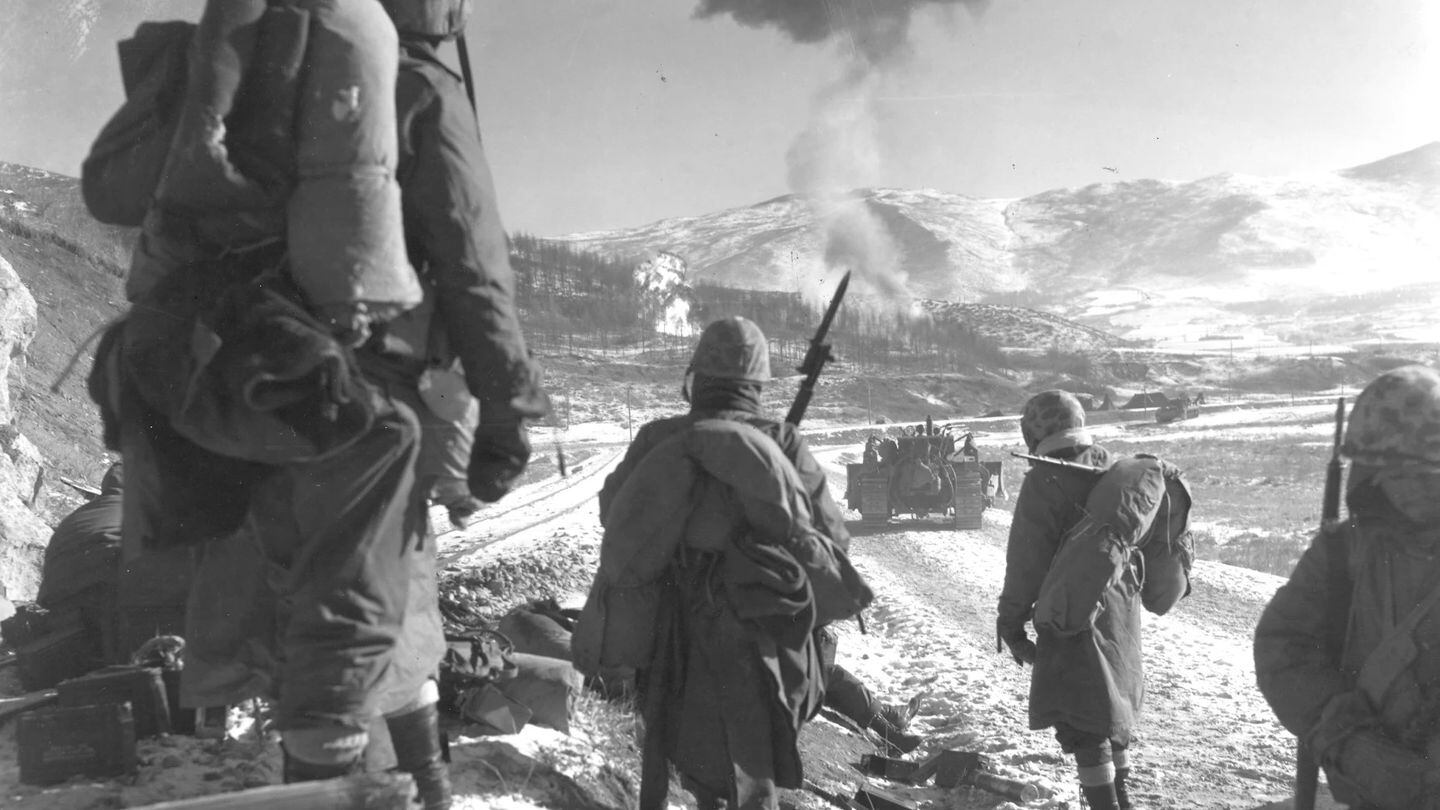
The fighting was so fierce that roughly 90 percent of Lee’s rifle company was killed or wounded, but thanks to Lee’s indefatigable efforts, the evacuation route remained open.
“Certainly, I was never afraid,” Lee told the Washington Post in 2010. “Perhaps the Chinese are all fatalists. I never expected to survive the war. So I was adamant that my death be honorable, be spectacular.”
Lee survived the war, retiring from the Marines in 1968 after serving in Vietnam as an intelligence officer. In addition to the Navy Cross, Lee was awarded a Silver Star and two Purple Hearts.
The men he commanded never forgot their officer.
“I didn’t care what color he was,” Ronald Burbridge, a rifleman in his unit in Korea, said in an interview for a 2010 Smithsonian documentary.
“I have told him many times, thank God that we had him.”
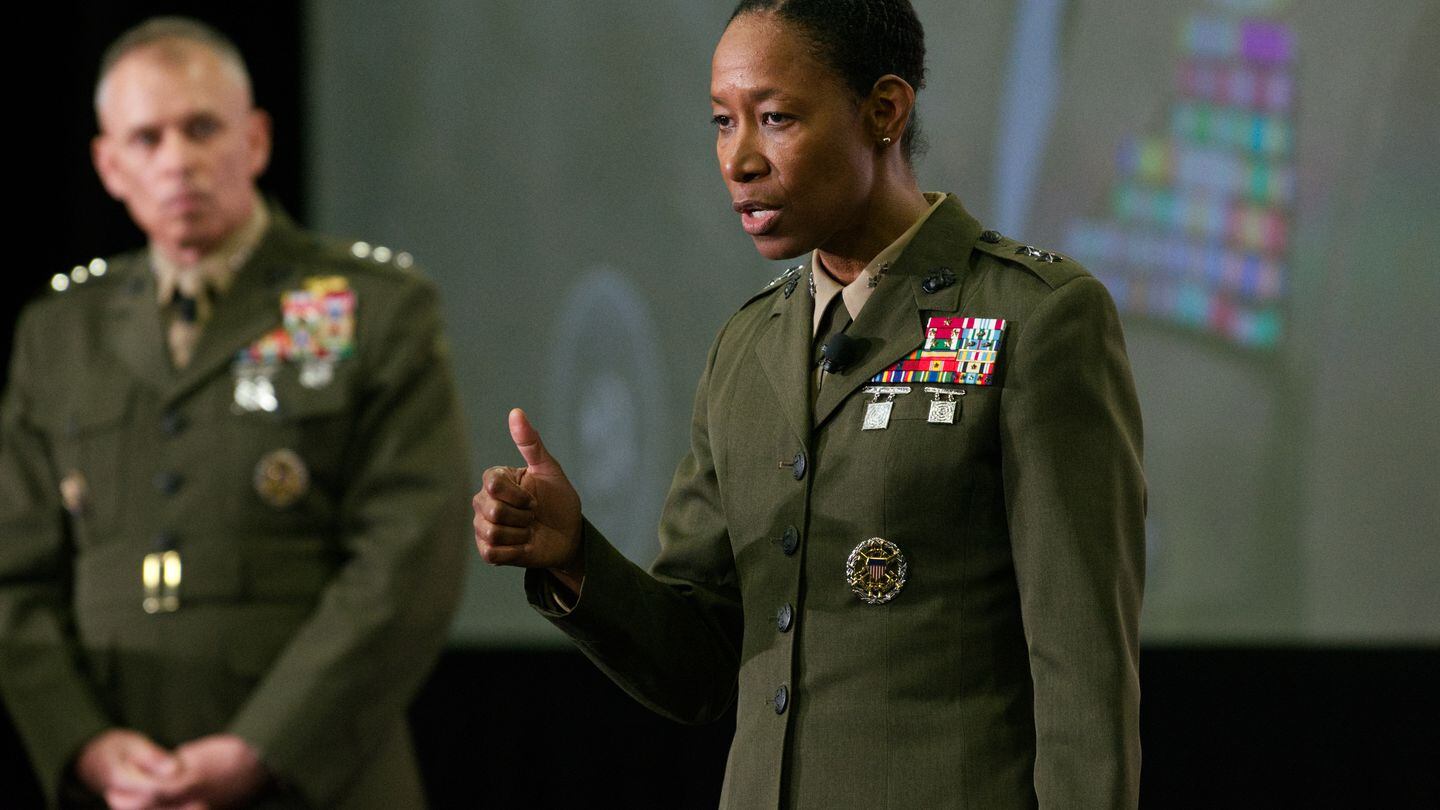
Volt Typhoon hacks likely to inspire copycats, CNMF’s Mahlock says
Attacks on critical infrastructure — food and water delivery, health care services, defense contracting and more — could hamper U.S. military response.
The Volt Typhoon hacks that targeted U.S. critical infrastructure won’t be the last of their kind, according to a Marine Corps cyber leader.
The Chinese intrusion affected organizations spanning the communications, utilities, education and government sectors including in Guam, a key foothold for American forces in the Indo-Pacific. The incident was disclosed in May 2023, with Microsoft describing the years-long operation as hard to detect and malicious.
The attack is likely to inspire copycats, said Maj. Gen. Lorna Mahlock, the commander of the Cyber National Mission Force. The CNMF, part of Cyber Command, deploys around the world to unearth malware and fortify digital defenses.
“I think we’re seeing Volt Typhoon activity continuing to persist. That’s in open source. We’re also seeing other actors using the tactics, techniques and procedures,” Mahlock said April 30 at the Modern Day Marine defense conference in Washington. “The greatest form of flattery is to copy.”
Ellis to succeed Rey as director of Army Network Cross-Functional Team
U.S. officials have long considered China a serious cyber hazard, with the International Institute for Strategic Studies think tank placing it in the second tier of its cyber powerhouse rankings alongside Russia. The Pentagon’s 2023 cyber strategy warned both Beijing and Moscow are prepared to unleash cyberattacks on critical infrastructure and defense networks should war break out.
The groundwork is being laid today. Volt Typhoon relied on so-called living-off-the-land techniques to lurk around vital systems and go largely unnoticed.
Attacks on critical infrastructure — food and water delivery, health care services, defense contracting and more — could jeopardize U.S. military response across the world as well as a sense of stateside calm. A ransomware attack on Colonial Pipeline in 2021 resulted in a run on fuel across the Southeast and aggravated concerns about energy security.
“Open-source reporting talks about this actor, out of China, who has access to our critical infrastructure and some of our key capabilities. Why? Not just for foreign intelligence-collection,” Mahlock said.
“We’ve seen this actor, China, grow in scope, scale and sophistication,” she added. “We’ve also seen that they’re undeterred.”
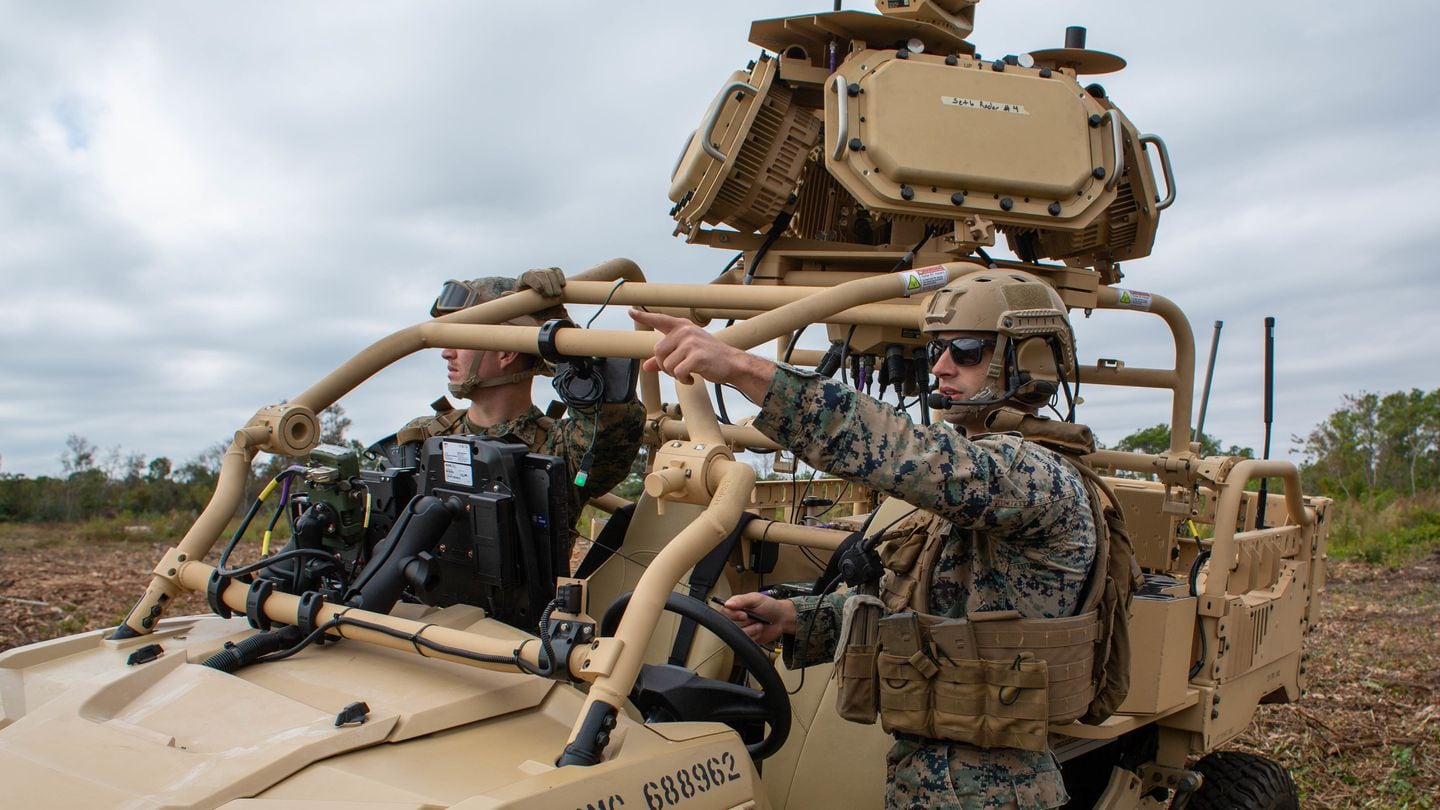
Marines to merge air control jobs as new air defense tech comes online
The Marine Corps believes it can merge air control jobs as it combines the duties of two types of air operations centers.
WASHINGTON — The Marine Corps will soon merge two air control jobs as it updates its approach to aviation operations and fields a new suite of air defense systems in 2025 in the face of future dangerous, long-distance operations.
Starting as early as 2026, the Marines plan to combine the work of air controllers in two types of roles: those who run tactical air operations centers, and those who staff direct air support centers.
Tactical centers typically provide the big picture of air operations for commanders, while direct support centers sit closer to the fight to offer immediate air support to troops.
“It’s the way grunts have dialed 911 for air support throughout the ages,” Col. Mike McCarthy, who leads the Corps’ aviation expeditionary enablers branch, told an audience at the Modern Day Marine Expo here Tuesday.
Marines rush to field two air defense systems amid global threats
The Marine Corps believes it can merge air control jobs as it likewise combines the duties of those separate ops facilities into a new concept — the Multifunction Air Operations Center.
Using the Corps’ new common aviation command-and-control system, which pulls all systems like missile interceptors and other air defense assets into one holistic picture, the Multifunction Air Operations Center is expected to become a one-stop shop for managing those forces. The centralized facility will provide a tactical view of the battlespace, track aircraft and missiles, and strike adversary targets with live rounds and other means, such as electromagnetic warfare.
The change comes as the Corps plans to field multiple defensive technologies — adding key new pieces to its air operations enterprise — as soon as 2025. Those include the medium range intercept capability, a cruise missile defense system; the Marine air defense integrated system, two joint light tactical vehicles equipped with electromagnetic warfare tools and a 30 mm cannon; and the light Marine air defense integrated system, a smaller version mounted on an all-terrain vehicle that can fit in an MV-22 Osprey aircraft.
Those systems will flow to the planned 15 air defense batteries the Corps expects to have online by 2029. The Marines had four air defense batteries in 2019, armed with shoulder-fired Stinger missiles and machine guns, McCarthy said.
But air defense isn’t the only change that Marine aviation is tackling as it expects its operational hubs to grow farther and farther apart worldwide.
“We are good at killing things,” said Col. Derek Brannon, director of the Cunningham Group, which merges aviation strategy with new technology. “We have focused a lot on kill webs and kill chains. What we have not focused a lot on, but will drive and allow us to succeed at the end of the day, is the logistics side of that.”
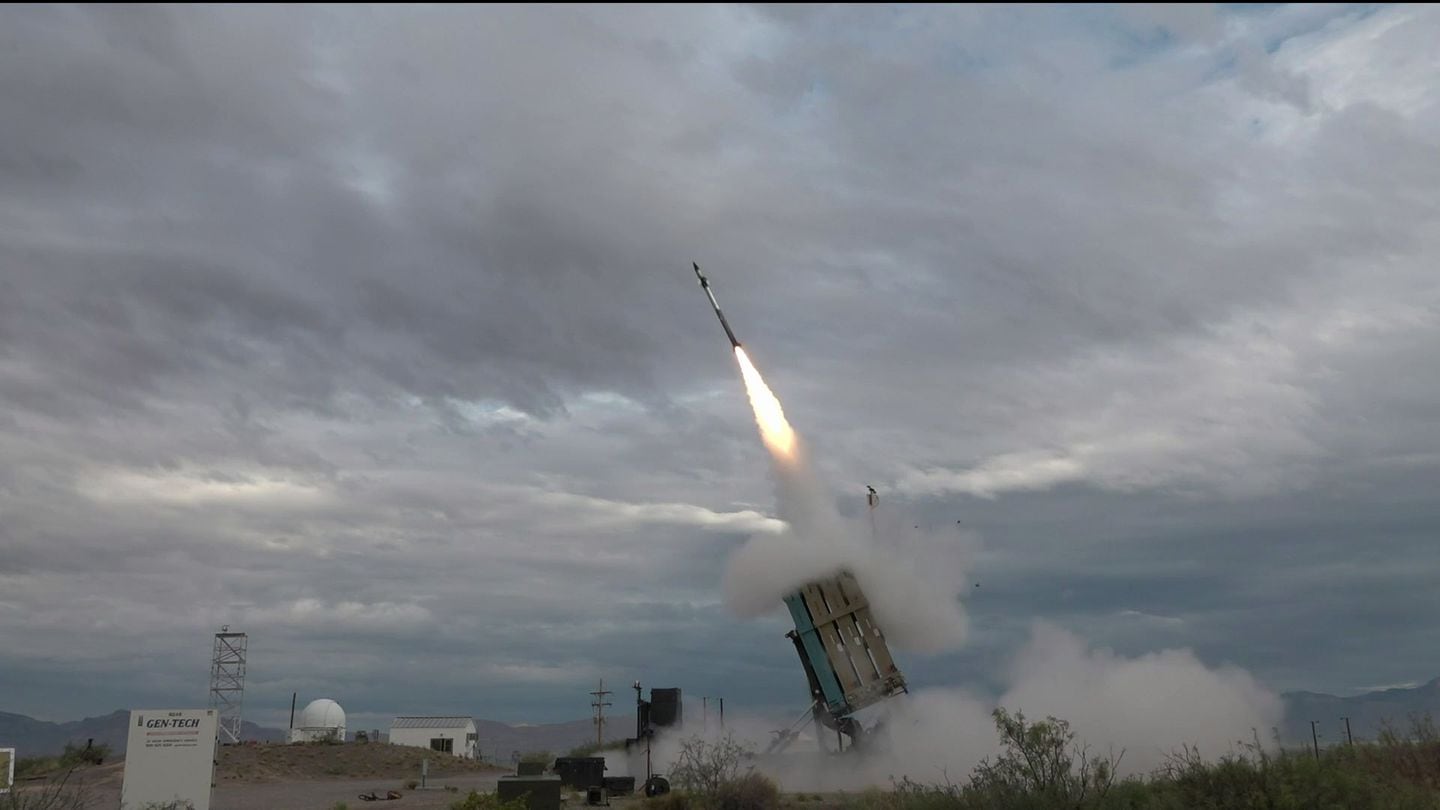
The group is working to maximize the use of communications systems to automatically update a slew of aviation data, like fuel levels and whether a system needs maintenance, to give troops a more accurate understanding of inventory readiness at any given time.
By having that data on hand, aviation planners can in the future use advanced tools like artificial intelligence to better understand how to employ aviation assets worldwide, Brannon said.
To meet its longer-distance sustainment needs, the Corps is developing the tactical aviation ground refueling system — an MV-22 Osprey-transported fuel system specifically designed to gas up vehicles while deployed away from a brick-and-mortar base. The idea is key to Marines’ plan to spread units across vast distances while ensuring they have the supplies they need to fight.
The service is also writing requirements for a P19C fire truck that can be transported in a C-130 Hercules airlifter, and lightweight matting to set up expeditionary airfields on remote islands or austere locations, Brannon said.
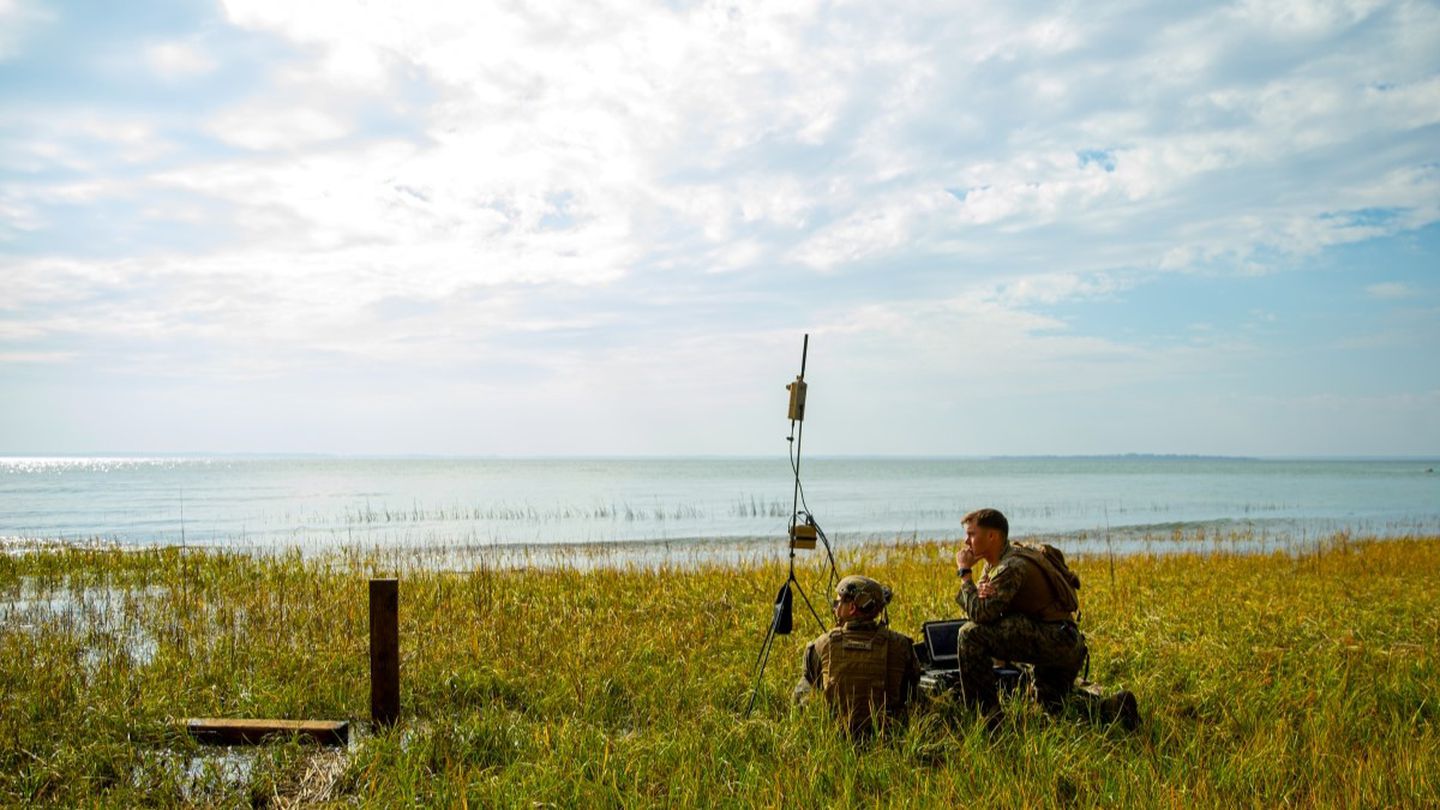
What Marines may be learning from Houthi tactics in the Red Sea
To some observers of the Marine Corps’ modernization plans, aspects of the Houthis' operations in the Red Sea and Gulf of Aden sound familiar.
The Houthis have imposed costs on a powerful navy by tracking down ships, threatening them with drones and missiles, and disrupting travel through vital waterways, while lurking near shore.
To some observers of the Marine Corps’ modernization plans, that sounds familiar.
In a fight with the Chinese military, the Corps wants Marines to move from place to place near shore in stealthy groups, working with the Navy to monitor and block enemy vessels.
The Houthis, Iran-backed rebels in Yemen, have followed similar tactics in their attacks on ships in the Red Sea and Gulf of Aden.
All the Houthi-US Navy incidents in the Middle East (that we know of)
From outposts on land, the Houthis figure out the locations of ships and then launch drones and fire anti-ship missiles at them, explained Bryan Clark, a senior fellow at the Hudson Institute. Then they move to another location, making it harder to track them.
In order to launch counterattacks, the U.S. military has to engage in “very aggressive, persistent surveillance and targeting,” Clark said.
The Houthis lack some of the Marines’ capabilities — in electronic warfare, for instance, Clark said.
“But still, I think it’s an example of the kind of operation that the Marines are trying to pursue,” Clark said. “And the Houthis have done it pretty effectively with a much less sophisticated force.”
The U.S. Navy and coalition fleets have managed to block most Houthi attacks on ships — but at a high cost. The warships have launched missiles that cost millions to intercept Houthi drones worth just thousands of dollars.
Meanwhile, many commercial ships are making lengthy diversions around the Cape of Good Hope in southern Africa to avoid transiting the Red Sea. The rebel group has said it is launching the attacks in solidarity with the Palestinians in Gaza.
The Houthis’ attacks come as the Marine Corps is four years into its ambitious plan to overhaul the force to counter a naval power like China, after spending decades waging land wars. The service intends for Marines to be lighter, more dispersed, and better at tracking enemies while avoiding being tracked themselves.
The plan, called Force Design, has attracted criticism from a group of retired Marine leaders, although it has largely secured the support of decision-makers in the Pentagon and Congress. The group of retirees claims the Corps made cuts and other changes with insufficient evidence, while current Marine leaders have argued that experiments, exercises and wargames back up their decisions.
“A lot of people have said, ‘The Marines aren’t going to be able to pull off these distributed operations inside the weapons engagement zone of an adversary like China,’” said Marine Lt. Col. Travis Hord, a student at the Joint Advanced Warfighting School who previously worked on future concept and capability development for the Marine Corps.
“I think what the Houthis are showing is that you might be able to do that, because they’ve been able to do it against us to some degree.”
In Hord’s view, while the Houthis’ operations are “not an absolute validation” of Force Design concepts, they show a land-based force equipped with sensors and missiles can pose dramatic challenges to ships.
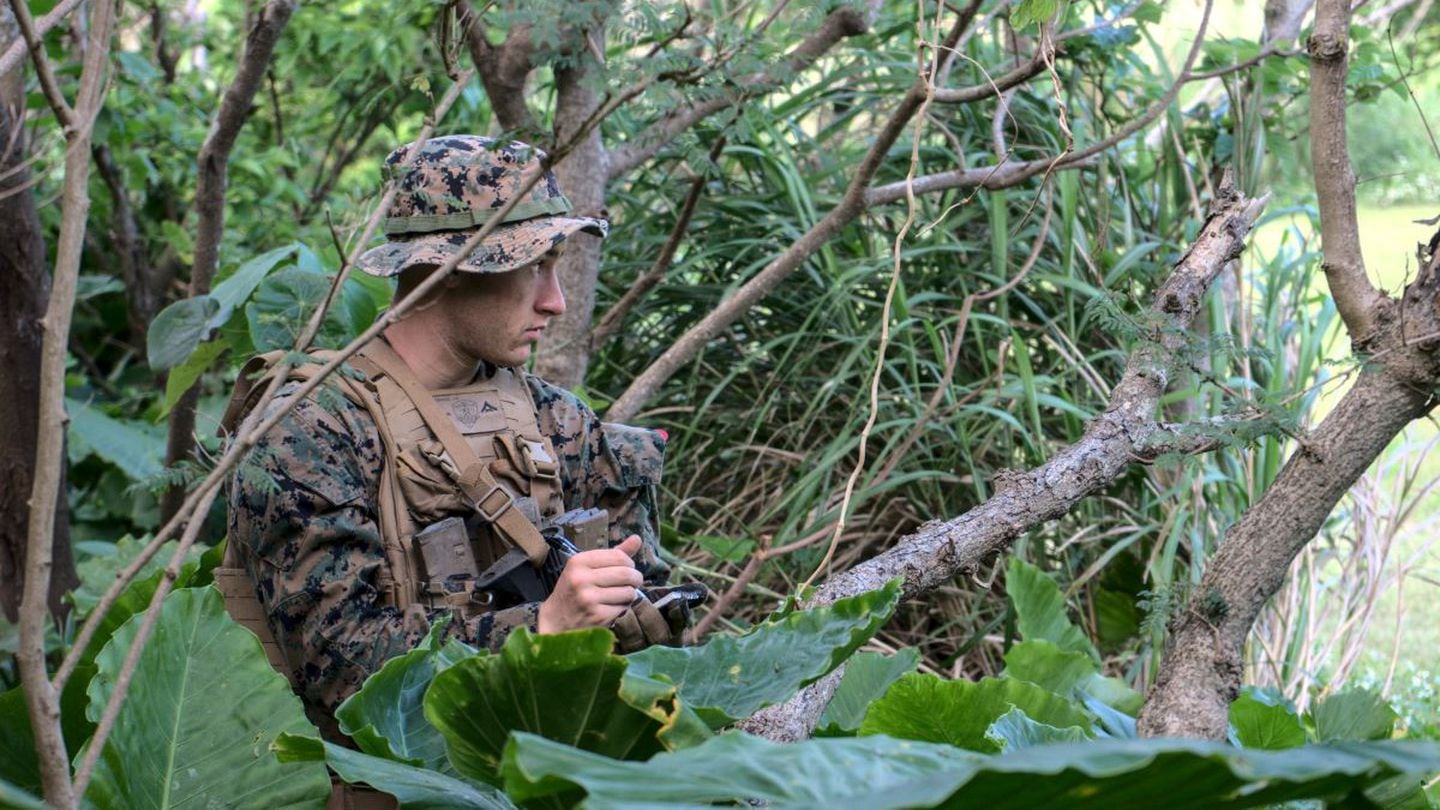
Hord, who emphasized he was not speaking on behalf of the Marine Corps, is one of six Marines and Marine veterans who drew parallels between Force Design and the Houthis’ operations in January in a War on the Rocks piece defending the Corps’ modernization plan.
Another of the essay’s co-authors, Lt. Col. Zach Ota, stressed that the U.S. military would not emulate the Houthis’ mission of disrupting trade, even as it might learn from their tactics.
“We are the upholders of freedom in the Pacific and of open commerce in the maritime commons,” said Ota, an operations planner with U.S. Pacific Fleet and Marine Corps Forces Pacific who noted he was not speaking on behalf of the Corps.
Another difference between the Houthis’ sea-denial operations and those the Marine Corps might undertake in a war in the Pacific is that the Houthis operate on the offensive, while the Corps’ stand-in forces are geared toward defensive actions, Ota said.
Ota pointed to a real-world example of land-based forces striking ships for defensive purposes: Ukrainian attacks on Russian ships in the Black Sea that have freed up commercial ships to export grain from Ukraine’s ports.
Retired Marine Gen. Anthony Zinni, who led U.S. Central Command from 1997 to 2000, expressed deep skepticism about the Marine Corps’ turn toward sea-denial operations from land.
Of course land-based missile systems can be part of sea-denial operations, Zinni said, but, he asked rhetorically, should the Marine Corps focus on that at the expense of other capabilities?
“Looking at this like a combatant commander, this was the crisis response force,” Zinni said. “They could respond with a greater degree of capability faster than anybody else. … That degree of readiness, deployability and flexibility were unique to them — all thrown away for Force Design.” (Corps leaders insist that Marines remain ready to respond quickly to a range of crises, even as they make Force Design-related changes.)
There’s also the fact that the Houthis haven’t damaged any U.S. Navy ships.
“How effective have the Houthis been at sea denial against our capabilities?” Zinni asked.
Retired Col. T.X. Hammes, a distinguished research fellow at the National Defense University, said one lesson from the fighting between the Houthis and the Navy is that ships can fend off a small number of missiles. So the Marine Corps should have more of them.
The Marines, Hammes said, should be capable of firing volleys of missiles that can overwhelm enemy ships’ defenses.
It is unclear to what extent the Marine Corps is implementing lessons from the Houthis’ operations. The Marine Corps did not respond to requests to speak with Marines who are studying insights from combat operations in the Red Sea and Gulf of Aden.
One thing is clear, however: Even when developing Force Design, the Corps drew lessons from U.S. adversaries.
In its 2021 document explaining stand-in forces — a concept that envisions Marines lurking near an adversary to conduct reconnaissance and support naval missions — the Corps devoted a page to the Houthis’ 2016-2018 activities in the Red Sea.
“Their efforts quickly evolved into an excellent example of how one might conduct effective reconnaissance, counter reconnaissance, and sea denial while operating inside of a contested area,” the document reads.
The Houthis aren’t the only hostile actors from which the military may be learning.
Even if military leaders may not acknowledge it, they are learning from Russia’s electronic jamming of Ukrainian communications, Clark said.
Corps leaders have said the service’s autonomous low-profile vessel prototype was inspired by drug smugglers’ narco-submarines.
Drawing lessons from enemy tactics would be nothing new.
During the Vietnam War, for example, the U.S. military adopted jungle-warfare tactics of the Viet Cong and North Vietnamese forces, noted retired Lt. Col. Travis Reese, another co-author of the War on the Rocks piece.
“Learning from your enemy is as old as war,” Reese said.